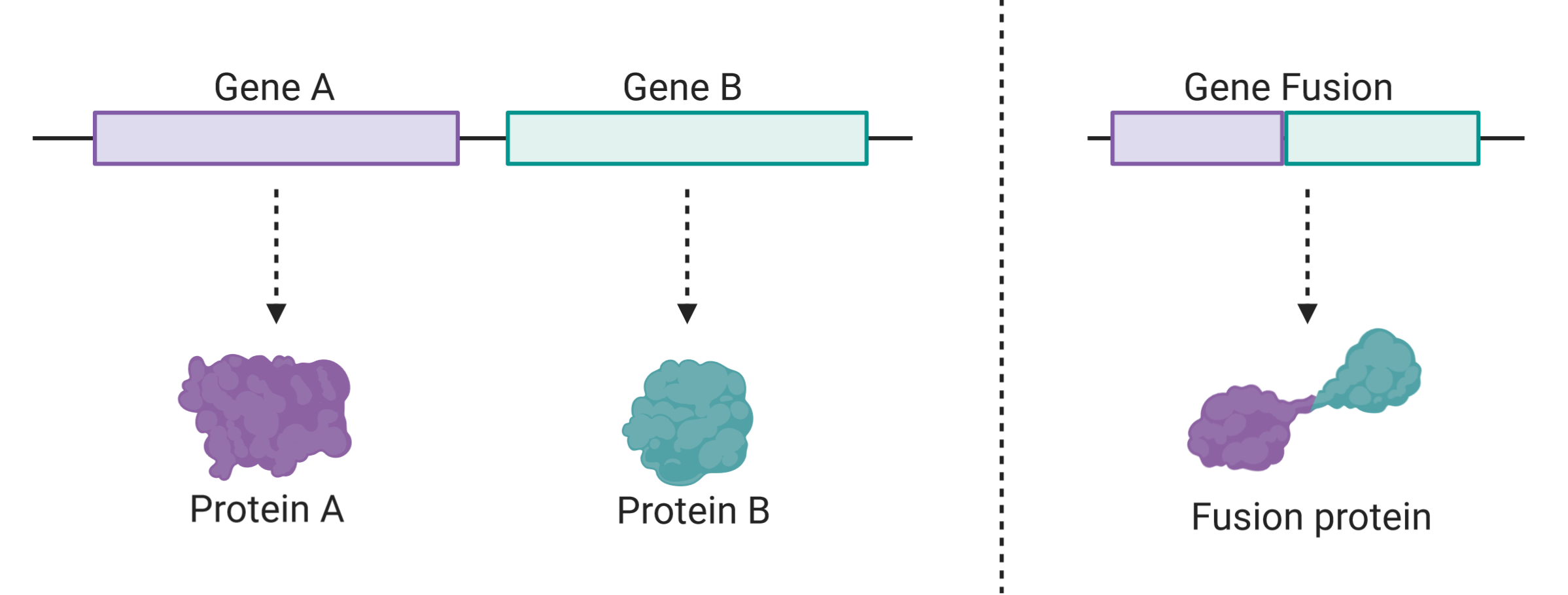Glossary
A
Active site
The active site is the specific region of an enzyme, present in all enzymes, where an enzyme substrate normally binds to undergo a chemical reaction.
Acute myeloid leukemia
Acute Myeloid Leukemia (AML) is a type of cancer in which abnormal white blood cells (myeloblasts), red blood cells, or platelets are produced in the bone marrow.
Allele
An Allele is an alternate version of the same gene. Within the human population, for example, every individual has genes that determine their physical characteristics. Variations in these genes lead to variations in appearance.
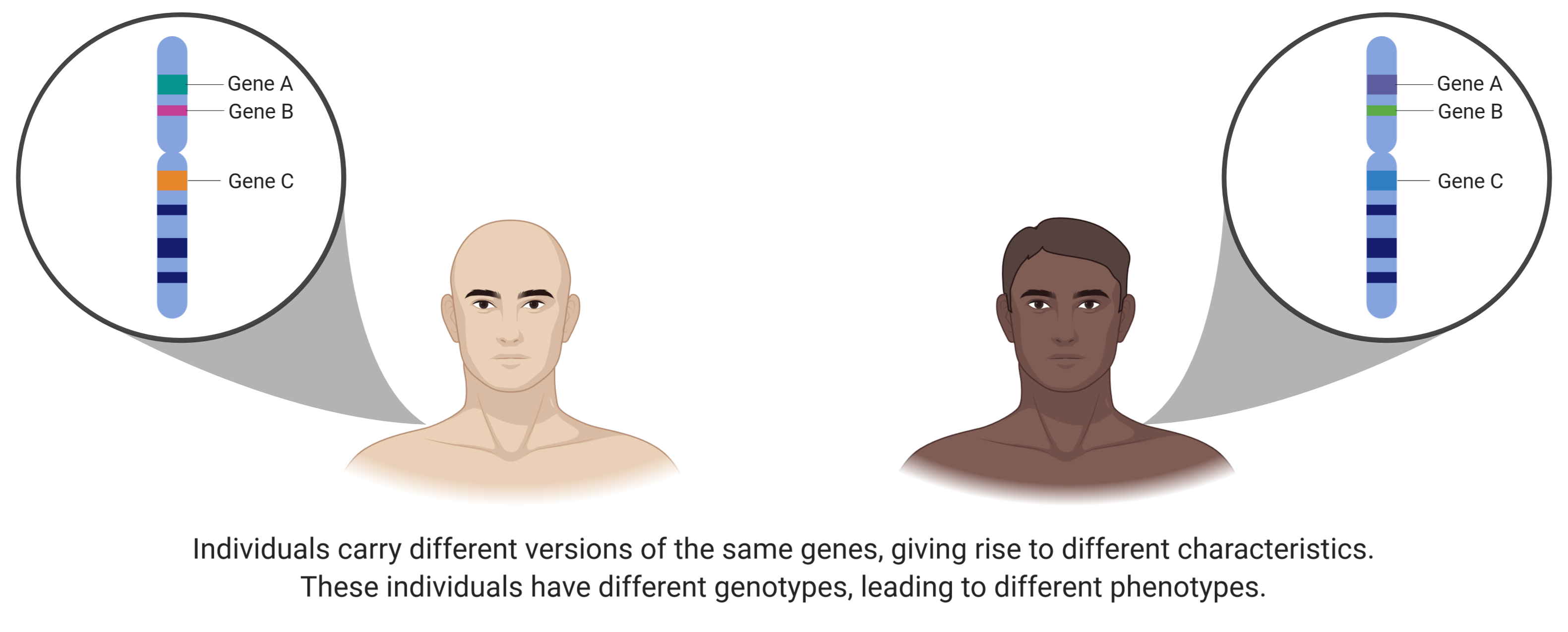
Alternative cleavage
The phenomenon where the poly-A tail of an RNA transcript can be cleaved at more than one location, thus producing poly-A tails of variable lengths.
Alternative splicing
Alternative splicing is a process that allows cells to produce more than one different protein from one single gene.
Protein-coding genes contain regions of DNA called introns and exons. The exons code for a protein product, while the introns do not. Following transcription, the introns must be removed from the mRNA by a process called splicing. In the process, cells can also remove exons to create different combinations of exons in the spliced mRNA, leading to different protein products.
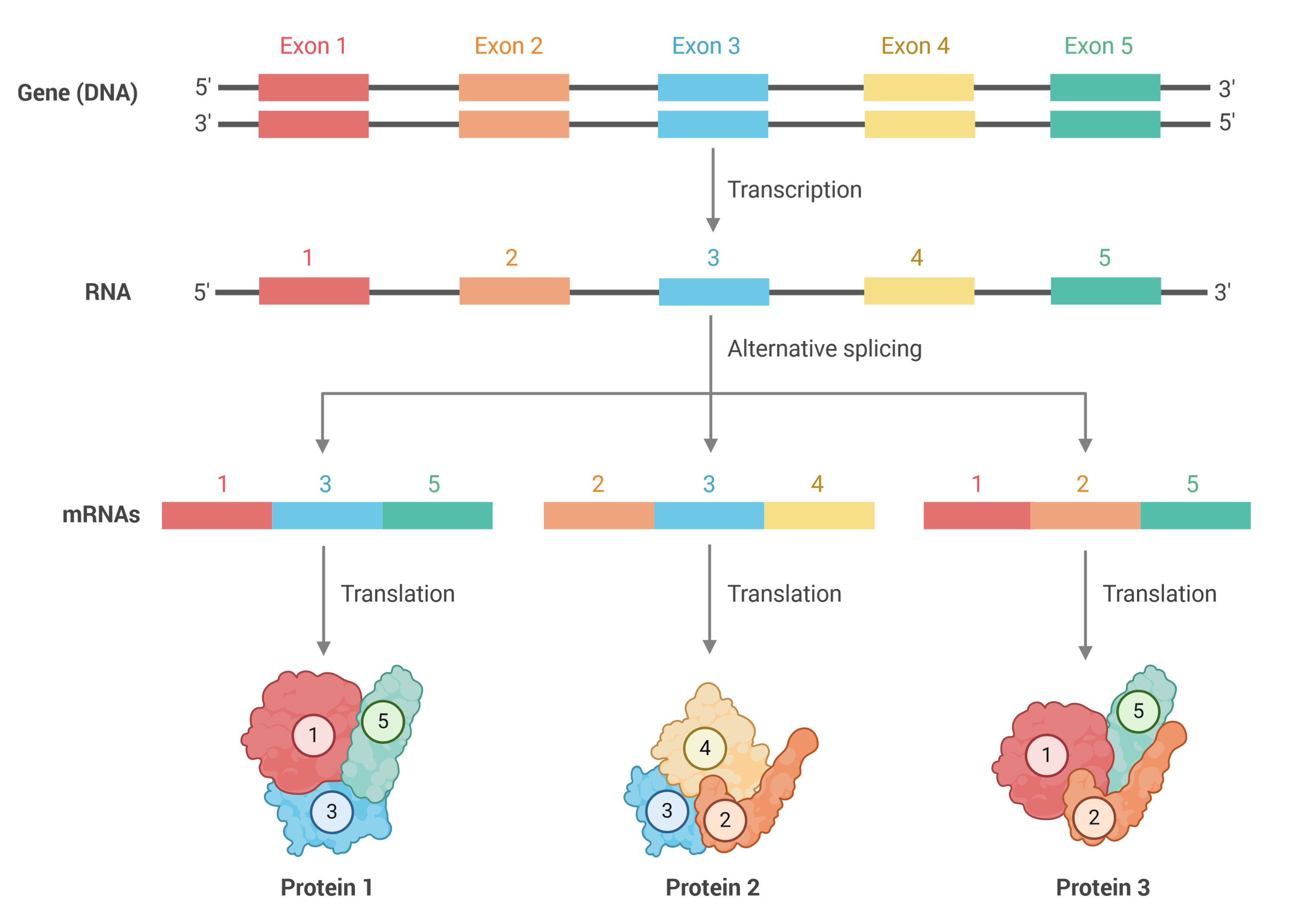
Alternative transcriptional initiation
The phenomenon where an individual gene has more than one transcriptional start site.
Amino acid
Amino acids are the building blocks that make up proteins. Each protein is coded by a protein-coding gene. When a gene (DNA) is transcribed into mRNA, the code is read in groups of three nucleotides, called a codon. Each codon codes for an amino acid. There are 20 different amino acids that make up the proteins in our bodies.
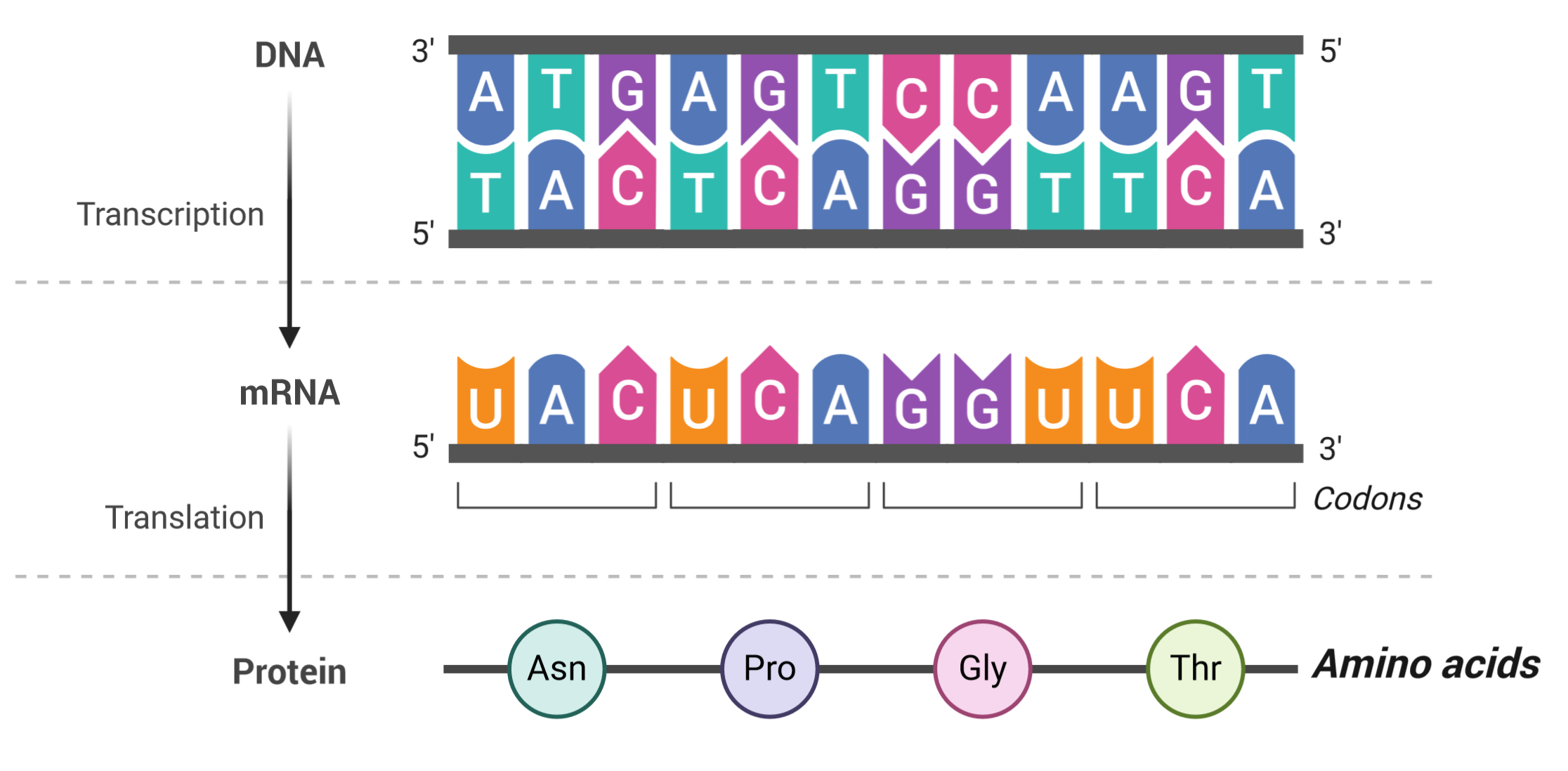
Animal models
A non-human species used in research because it can mimic aspects of a disease found in humans. Unlike laboratory cell lines, animals comprise multiple cell types, organs, circulatory systems, and other systems. Often considered the best approximation of a human body.
Antibiotics
A medicinal drug (such as penicillin or its derivatives) that inhibits the growth of or destroys microorganisms or pathogens that can cause illness. Antibiotics are powerful medicines used to treat certain illnesses and fight bacterial infections.
Apoptosis
Apoptosis is programmed cell death. When triggered, a cell will undergo an orderly process in which the cellular contents are packaged and discarded. The immune system will then clear the cellular remnants.

Artifact
In genetics, an artifact is a result that does not represent the true biological material, function, or situation but arises from a technical, often artificial, process (e.g., next generation sequencing artifacts can arise during the alignment or assembly of sequencing reads).
Autophagy
A regulated process in the cell that removes unnecessary or dysfunctional components, breaking them down and reusing their building blocks.
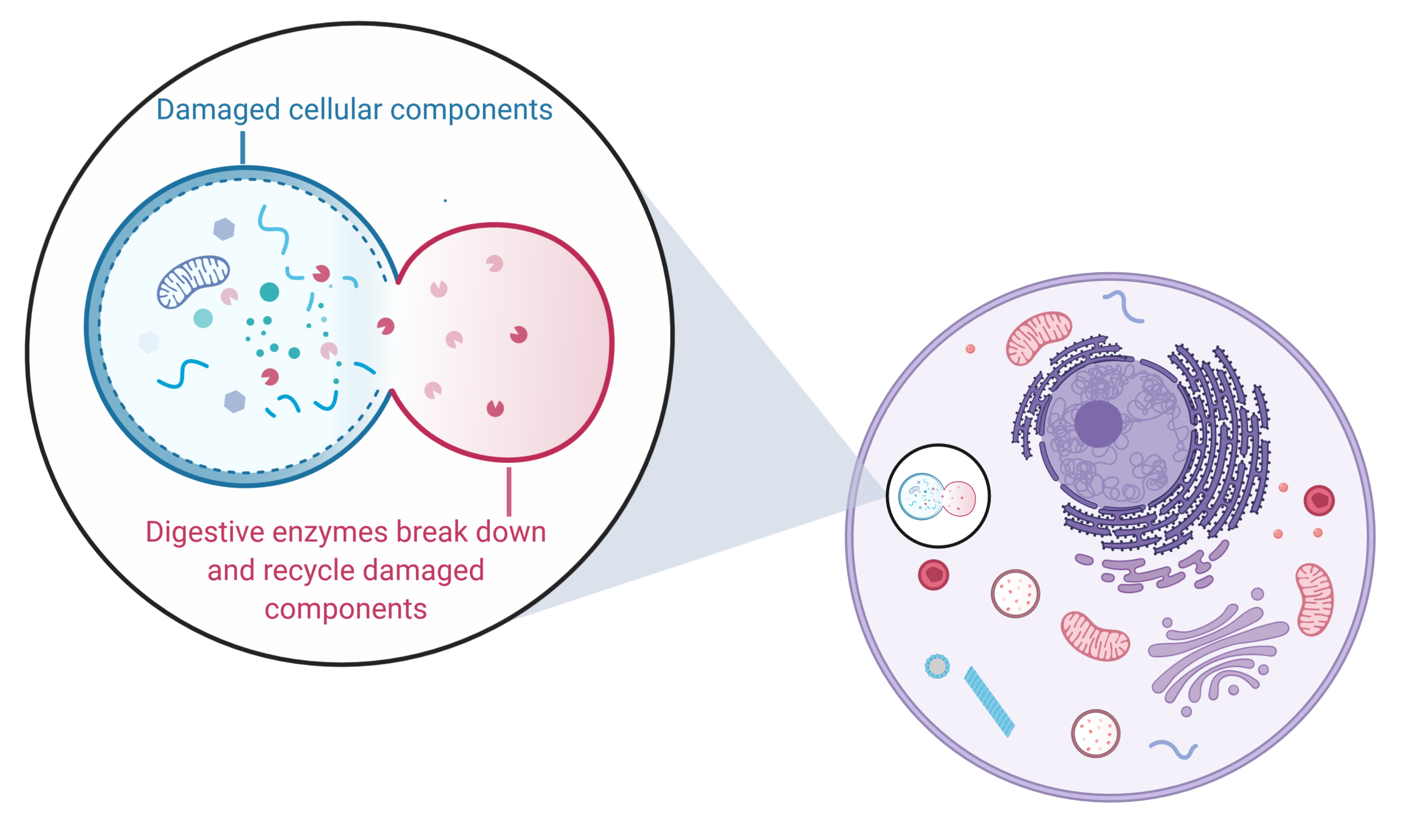
Autosome
An autosome is any chromosome that is not a sex chromosome. Humans have 23 pairs of chromosomes—22 pairs of autosomes and one pair of sex chromosomes (X chromosome and Y chromosome).
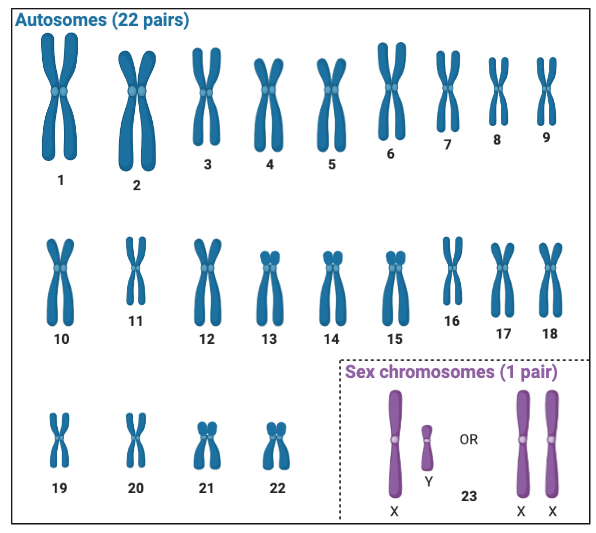
B
Bacterium
A single-celled microorganism. Bacteria are prokaryotic cells, meaning that unlike human, animal, plant and fungi cells they lack internal membrane-bound structures (including an nucleus). Bacteria may be commensal, meaning they do not cause disease, or pathogenic.

Base pair
A base pair is formed when two nucleotides, the building blocks of DNA, form bonds with each other to hold the two strands of the DNA double helix together. Base pairs form between complementary nucleotides: Adenine (A) forms base pairs with Thymine (T) and Uracil (U) and DNA and RNA, respectively, while Cytosine (C) forms base pairs with Guanine (G).
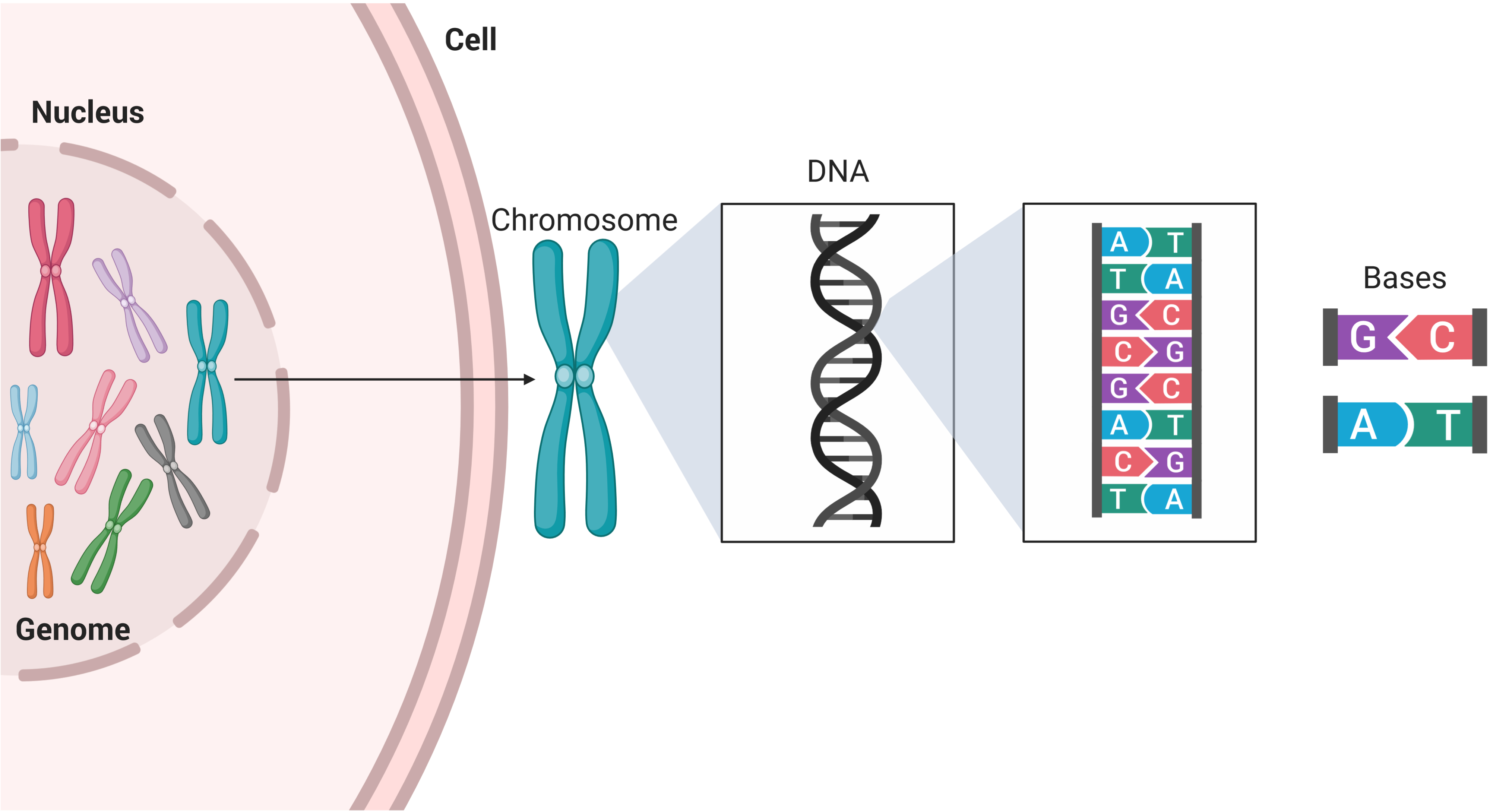
Bioinformatics
Bioinformatics is an interdisciplinary field that develops methods and software tools for understanding biological data, in particular when the data sets are large and complex.
Biomarker
In medicine, a biomarker is a measurable indicator of the severity or presence of some disease state. More generally a biomarker is anything that can be used as an indicator of a particular disease state or some other physiological state of an organism.
Biospecimen
Bloom filters
Bloom filters are a space-efficient probabilistic data structure designed to rapidly and efficiently store elements and test whether an element is present in a set. For example, checking quickly to see if a username is available where the set here is the list of all registered usernames.
Bone marrow
The spongy tissue (also referred to as the “myeloid tissue”) inside bones where blood cells—red (erythrocytes), white (leukocytes), and/or platelets (thrombocytes)—are differentiated from stem cells.
BRCA1/BRCA2
BRCA1 and BRCA2 are human genes that code for tumour suppressor proteins which help repair damaged DNA, helping to maintain the stability of each cell’s genetic material. When either of these genes is mutated, leading to a protein product that is either not made at all or does not function properly, the cell cannot repair DNA damage effectively. Cells with mutations in these genes are prone to genetic alterations that can lead to cancer.
C
Cancer
Carrier
Cell
The smallest structural and functional unit of an organism, typically microscopic and consisting of cytoplasm and a nucleus enclosed in a membrane.
Cell cycle
A series of events that take place in a cell as it grows and divides.
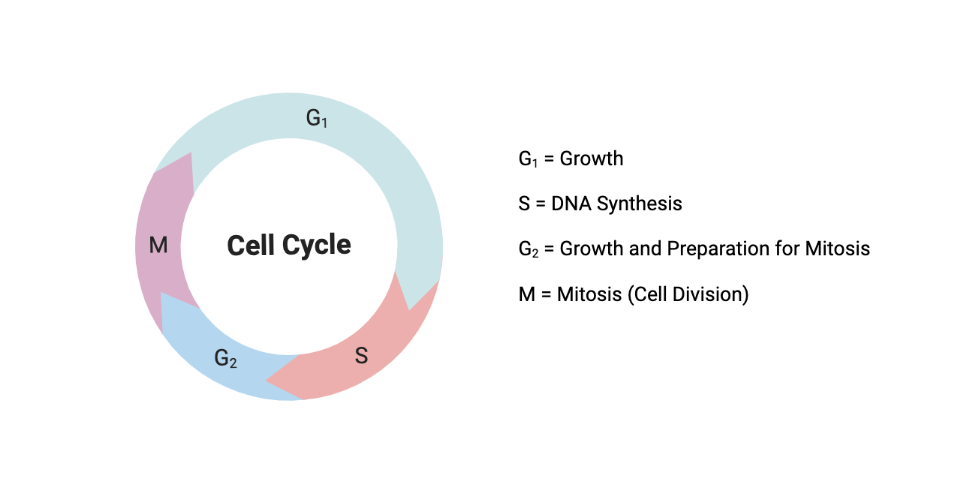
Cellular Differentiation
The normal process by which a cell matures into a more specialized cell with a distinct form and function.
Chemotherapy
A type of cancer treatment that uses one or more anti-cancer drug(s) to target and eliminate cancerous cells.
Chromatin
Chromosome
A long piece of DNA containing part or all of the genetic material, or genome, of an organism. Human genomes are made up of 23 pairs of chromosomes to give 46 chromosomes total.

Clinical trial
Once scientists have demonstrated the potential of a particular medical intervention in the laboratory setting, a clinical trial is done to find out whether these promising approaches to disease prevention, diagnosis and treatment are safe and effective when used on patients.
Codon
During protein synthesis (translation), the mRNA is read in groups of three bases, called codons, that “code” for a particular amino acid in the protein product. There are 64 three-letter codons that together code for the 20 amino acids that make up proteins.

Competitive inhibition
Competitive inhibition is a type of enzyme inhibition where an inhibitor (e.g., small molecule compound/drug, other protein, etc.) outcompetes a substrate for binding to an enzyme’s active site and prevents the enzyme from functioning properly.
Complementary
A property of nucleotides, whereby Adenine (A) always pairs with Thymine (T) or Uracil (U) in DNA and RNA, respectively, while Cytosine (C) always pairs with Guanine (G). The DNA double helix is made up of two strands of DNA held together by complementary base pairs.

Conserved gene
A gene that is similar across all members of a species, meaning that it has remained consistent throughout evolution of that species. This usually means that the gene is necessary for survival.
Copy number variation
A copy number variation (CNV) is when the number of copies of a gene differs from one individual to the next. CNVs occur when sections of the genome are repeated, and the number of repeats varies between individuals. CNVs can occur due to duplication or deletion events in the genome.
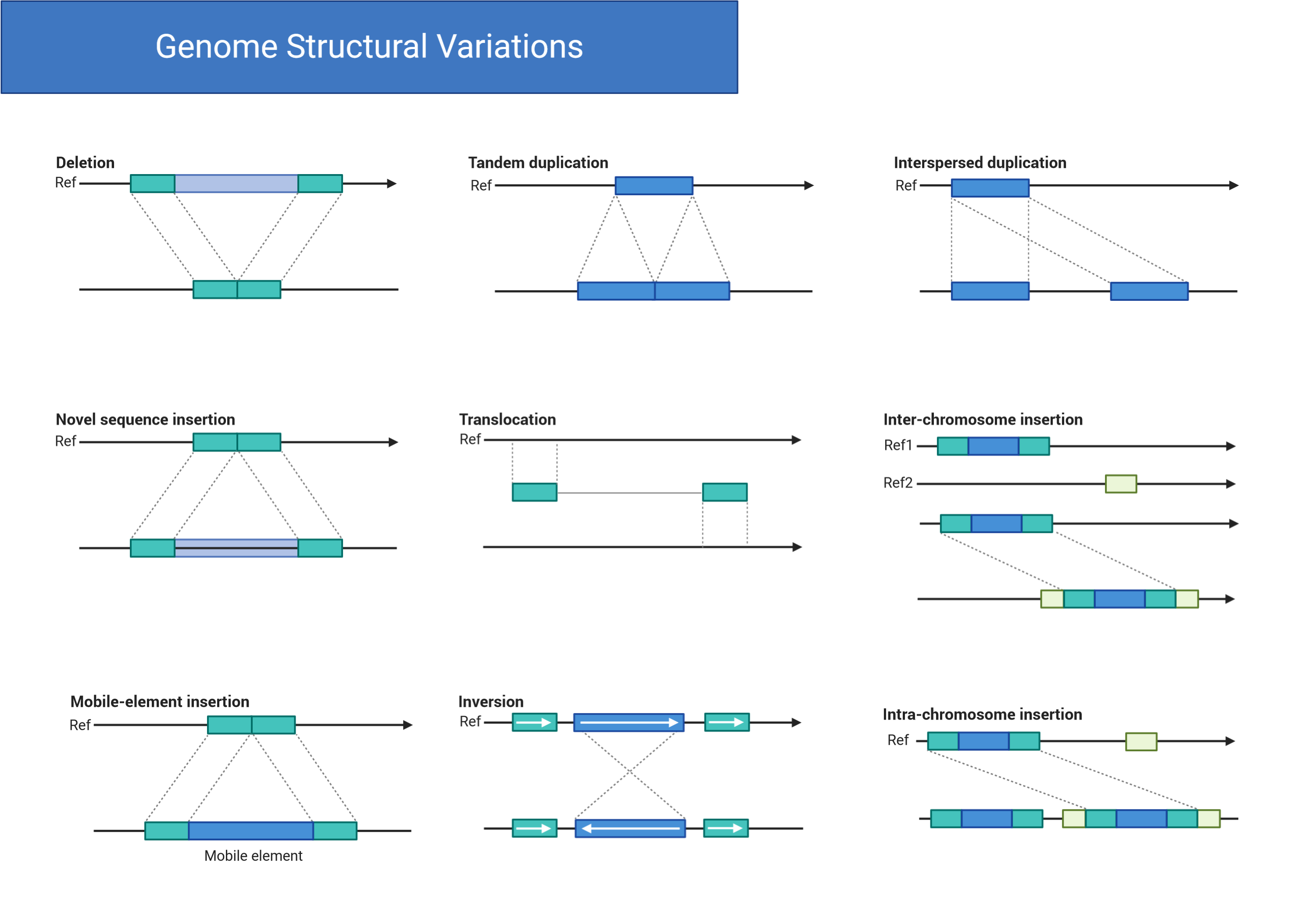
D
De novo genome assembly
Building a contiguous genome sequence from multiple smaller DNA fragments assuming no prior knowledge of the source DNA sequence length, layout, or composition (e.g., without the use of a reference genome). De novo is Latin for “of new” or “from the beginning”.
Deletion
A genetic mutation in which a part of a chromosome, ranging from a single base pair to a large piece of chromosome, is left out during DNA replication. This leads to a cell in which a portion of the genome is missing.

Deoxyribonucelic acid (DNA)
DNA, which stands for deoxyribonucleic acid, is the biological molecule that codes for a living organism. DNA is a nucleic acid—a long chain of nucleotides. The DNA double helix is composed of two strands of nucleotides paired together by complimentary base pairs.

DNA demethylation
An epigenetic process in which biochemicals, called methyl groups, are removed from Cytosine (C) nucleotides in the promoter region of a gene. The addition or removal of methyl groups regulates gene expression. See DNA methylation.
DNA methylation
An epigenetic process in which biochemicals, called methyl groups, are added onto Cytosine (C) nucleotides in the promoter region of a gene. The addition or removal of methyl groups regulates gene expression.
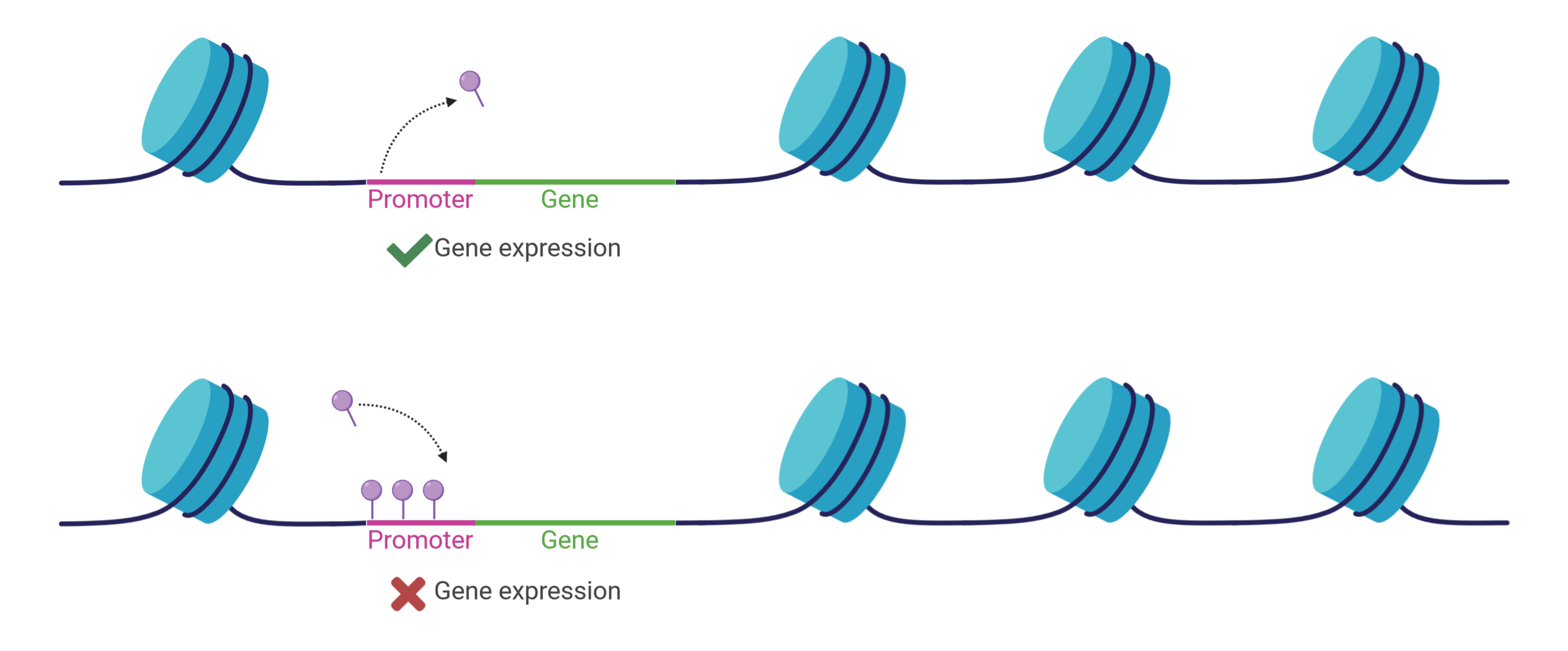
DNA sequencing
The process of determining the order of nucleotides in DNA. It can be used to identify genetic mutations present in the DNA of an individual or in a cancer sample.

Driver mutation
Drug target
A biological molecule that has been shown to be critical for development of a disease. Scientists aim to develop drugs that block this molecule in order to treat or prevent disease.
Duplication
A type of genetic mutation that involves the duplication of one or more copies of a gene or region of a chromosome.

E
Endocytosis
The process by which cells take in substances from outside of the cell by engulfing them in a vesicle.
Enzyme
A protein that acts as a biological catalyst for a chemical reaction. Enzymes speed up biochemical reactions by converting one molecule, called a substrate, into a product. In order for a reaction to proceed, the substrate—upon which the chemical reaction is occurring—binds the enzyme at a specific region known as the active site. Note that while all enzymes are proteins, not all proteins are enzymes.To date, there are approximately 75,000 different enzymes that catalyze reactions in the human body.
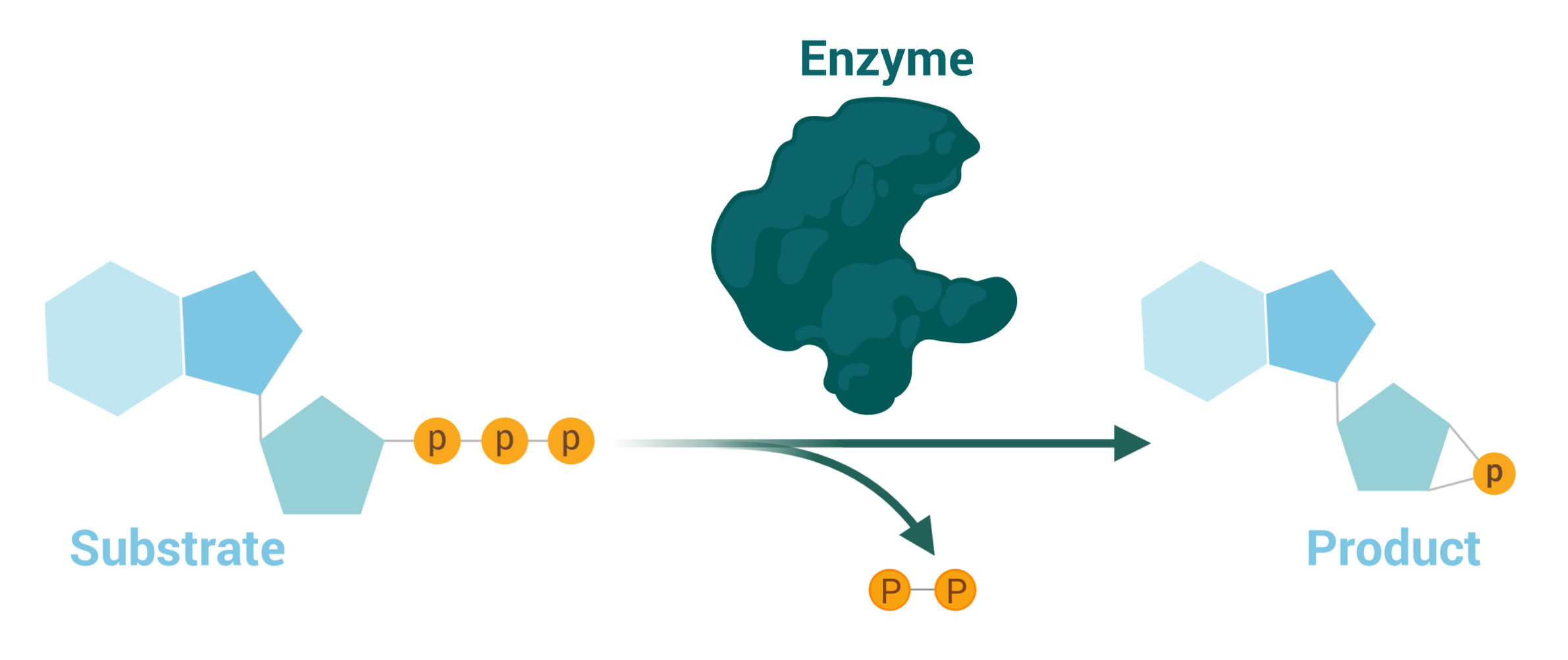
Epigenetics
The study of biochemical modifications to the genome, either to the DNA itself through DNA methylation, or to the DNA packaging proteins called histones, to regulate gene expression.
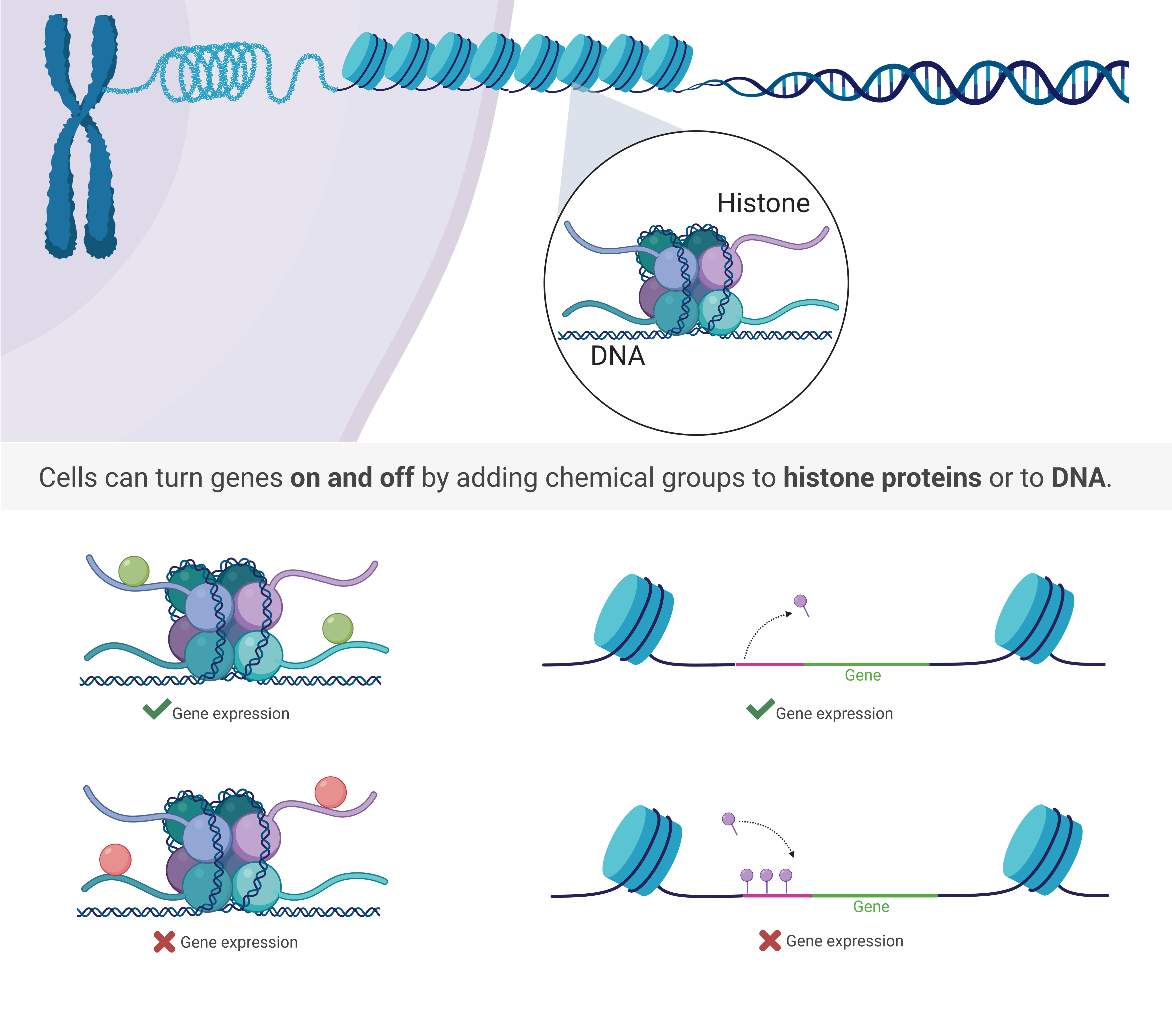
Epigenome
The complete set of all the heritable, chemical modifications (epigenetic modifications or marks) made to DNA and histone proteins within a cell, tissue, organism, or sample, that regulate the genome without altering the underlying DNA sequence composition.
Epigenomics
The study of the complete set of epigenetic modifications in an organism’s genome.
Eukaryote
An organism whose cells have their DNA enclosed in a membrane-bound compartment called a nucleus, unlike prokaryotic cells which do not have any membrane-bound organelles.

Ex vivo
In Latin, ex vivo means, “outside of the living body”. The samples to be tested have been extracted from the organism.
Extracellular vesicles
Extracellular vesicles (EVs) are membrane-bound “capsules” or particles that are naturally released from almost all cells for the purposes of cell-to-cell communication and transporting cargo between cells. Unlike cells, EVs cannot replicate. Examples of EVs include small EVs, exosomes and microvesicles.
Exome sequencing
Exome sequencing, also known as whole exome sequencing (WES) is a DNA sequencing technique focused on the portion of the genome that codes for proteins, known as the exome. The exome comprises only 1% of the genome.
F
Formalin-fixed paraffin-embedded tissue
Formalin-fixed paraffin-embedded (FFPE) tissues have undergone a specific laboratory technique to preserve biospecimens for research or diagnostic purposes. Tissues are first fixed in formalin to preserve the structures and proteins present in the tissues, and then embedded in a paraffin wax block which can be sliced thinly and viewed under a microscope.

Frameshift mutation
A genetic mutation caused by either insertions or deletions of a number of base pairs that is not divisible by three, leading to a shift in the way codons are read during translation.
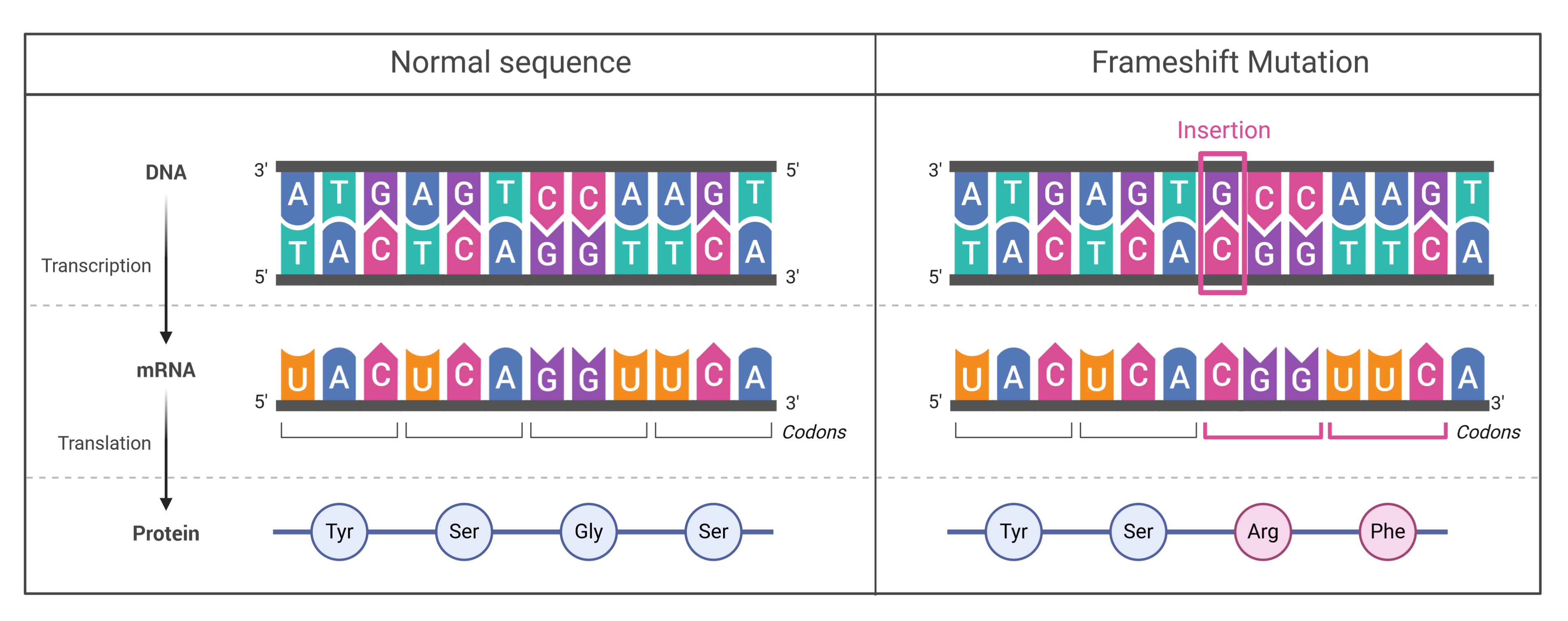
G
GC-bias
A potential artifact of next generation sequencing (NGS) that presents as uneven coverage of GC-rich or GC-poor sequencing content. Library amplification by PCR has been found to be a key factor in generating GC-bias.
Gel electrophoresis
A technique used to separate biological molecules, either nucleic acids or proteins, based on their size. Biomolecules are placed in a gel, which acts as a matrix through which the molecules must move upon application of an electrical charge. Smaller molecules will move more rapidly through the matrix while the movement of larger ones will be impaired.
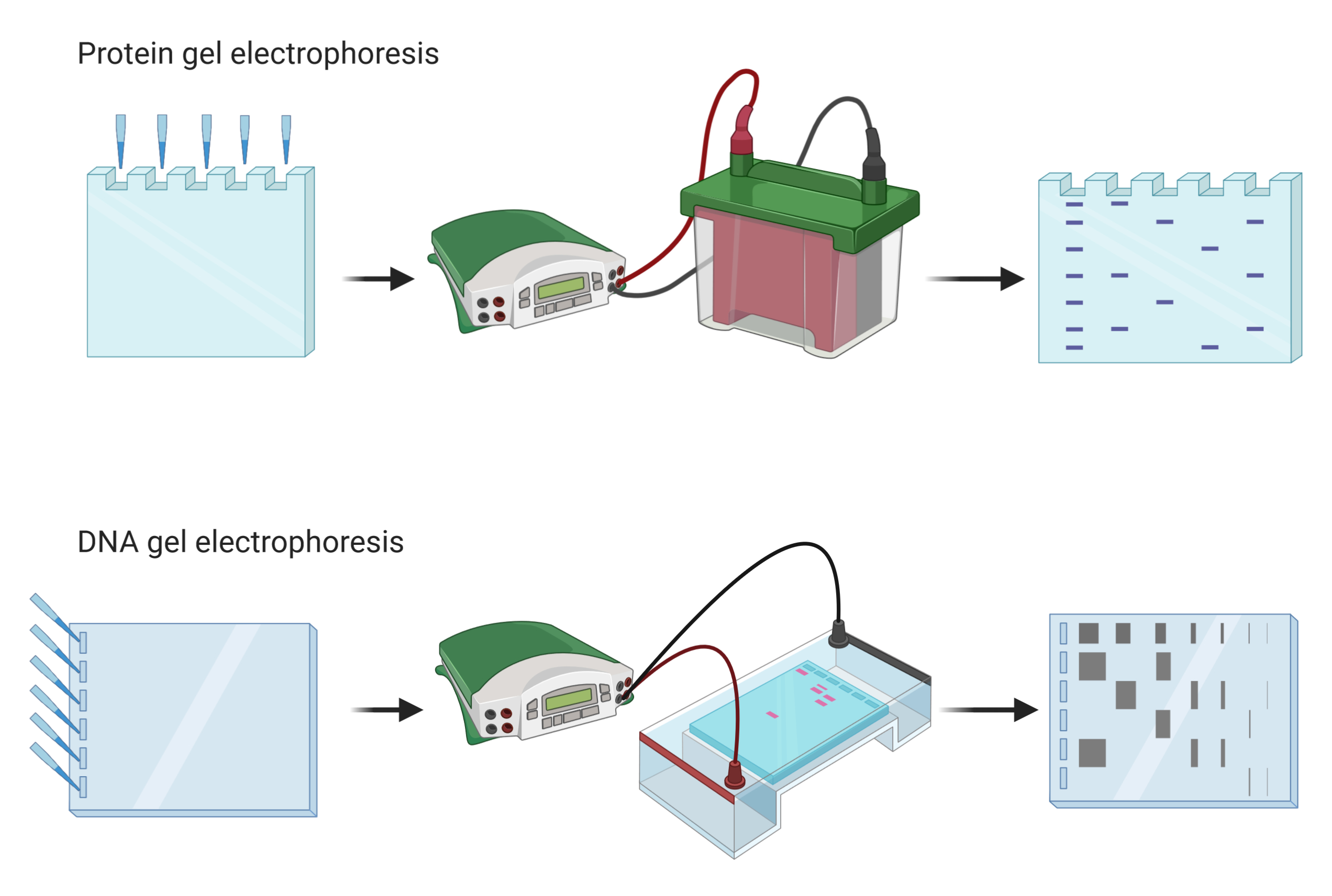
Gene
Gene expression
When a gene is expressed, it is read by the cell through a process called transcription to produce an RNA molecule. If the gene codes for a protein, the RNA molecule will be translated to produce a protein product. Because not all gene products are required by every cell in an organism (e.g. brain cells do not require the same gene products as a stomach cell), gene expression can be turned on and off, or the level of gene expression can be regulated, through epigenetic processes.

Gene fusion
Gene knockout
An experimental laboratory technique in which a gene is intentionally removed, or “knocked out”, in order to study the function of that gene.
Gene therapy
Genetic counselor
A health professional who provides information and counsel to individuals and families who carry genes responsible for genetic conditions or diseases.
Genetic testing
Genome
The complete set of DNA of an organism. The human genome is comprised of 23 pairs of chromosomes and approximately three billion base pairs.

Genomics
A branch of biological science focused on understanding the sequence, structure, function and evolution of the genomes of organisms or populations of organisms. Fields that interface and are often included within the field of genomics include bioinformatics, epigenetics, epigenomics, metabolomics, proteomics and transcriptomics.
Genotype
Genotyping
The process of determining differences in the genetic make-up of an individual by examining and comparing an individual’s DNA sequence to others at specific positions within the genome.
Germline
A subset of cells in an organism that give rise to reproductive (sperm or egg) cells. Mutations in the DNA of germline cells are therefore passed on to future generations. Non-germline cells are called somatic cells.
H
Heritable
A genetic trait that can be inherited or passed on to future generations.
Heterogeneous
Histone
Proteins found in the nucleus of a cell around which DNA is wound. They function to package, condense and organize DNA so that it fits inside the nucleus, while also helping to regulate gene expression through epigenetic modification.
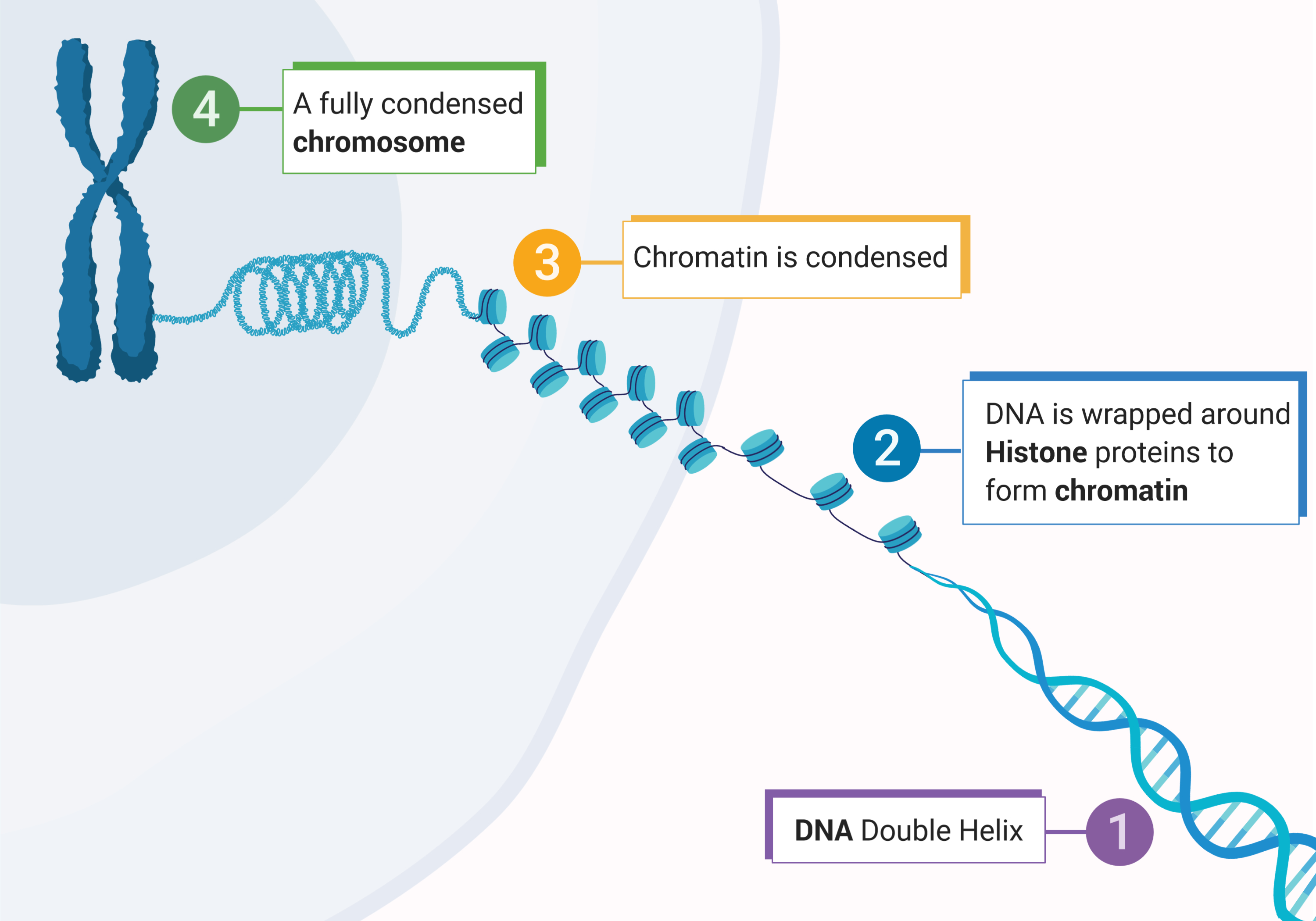
Hot spot
I
Immune checkpoint inhibitors
A type of cancer immunotherapy that targets key regulators of the immune system, helping it recognize and eliminate cancer cells.
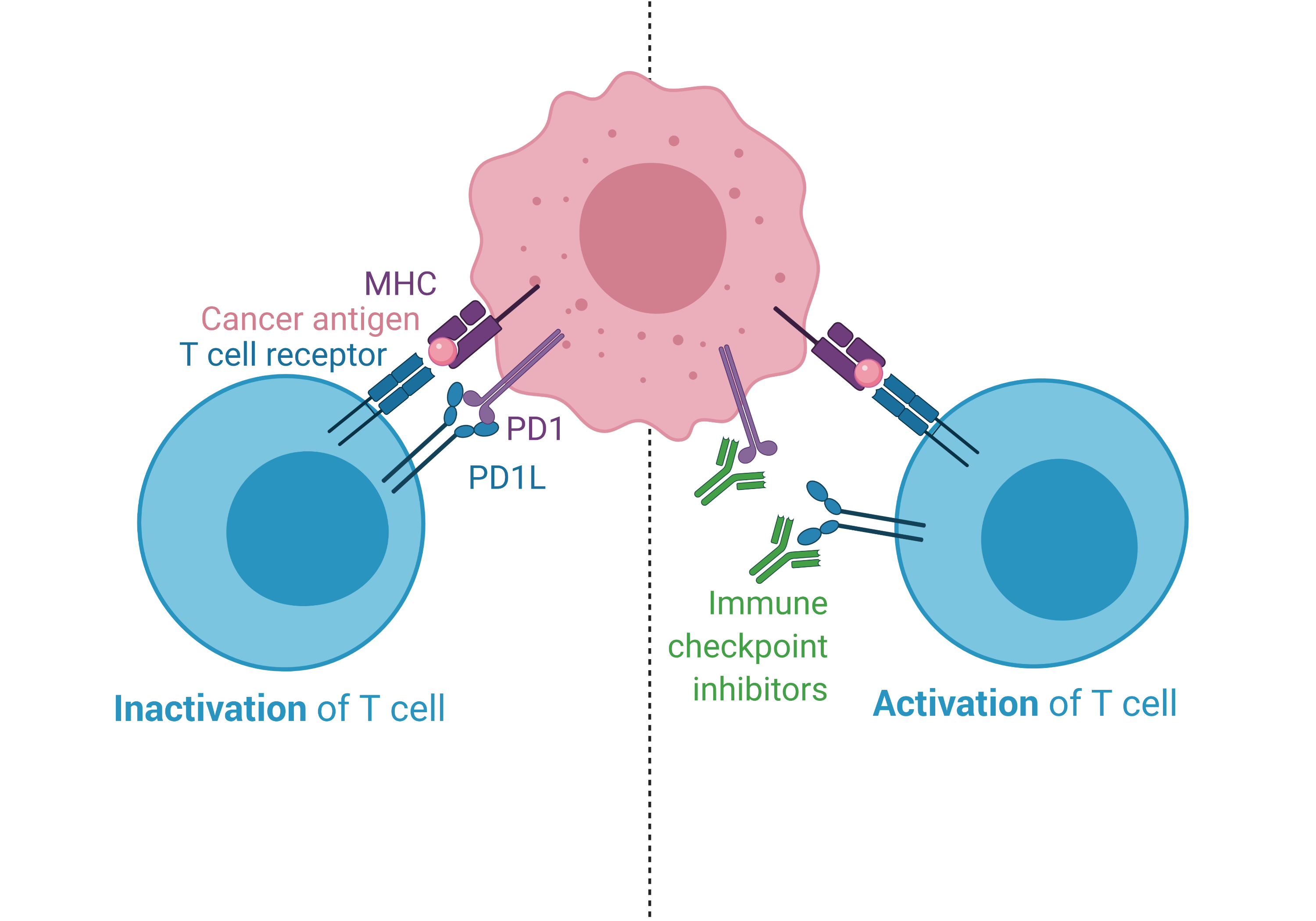
Immunotherapy
A type of therapy that works by activating or suppressing the immune system.
In vitro
Studies conducted using cells or biological molecules outside of their normal biological setting (e.g., outside of the organism or environment they came from) and instead in a laboratory setting (e.g., in a test tube) are said to be done in vitro.
In vivo
A biological process or reaction occurring within a living organism.
In silico
A process that is performed on a computer or in a computer simulation.
Indel
Inherited
A trait or gene that is passed down from parents to their offspring.
Innate immune response
The natural response of your body to foreign matter or antigens. Innate, or non-specific, immunity is the first immunological mechanism for fighting against infections. Innate immunity is the defence system that you are born with and involves several layers of protection and barriers that prevent harmful pathogens from entering your body.
Insertion
Inversion
A type of genetic mutation that involves rearrangement of a chromosome in which a section of DNA is reversed.

K
k-mer
In bioinformatics, a k-mer refers to the smaller subsequences or substrings that make up a complete sequence. For example, the sequence AGAT is made up of four monomers (A, G, A, T), three 2-mers (AG, GA, AT), two 3-mers (AGA, GAT), and one 4-mer (AGAT). Each of these fixed-size “chunks” are considered k-mers. In other words, k-mers are substrings of length “k” in any given “string” and this string can be made up of any kind of chain including DNA, RNA, or proteins. k-mers are highly useful in bioinformatics analysis because decomposing and analyzing a sequence in smaller chunks (its k-mers) is more efficient than looking at the full sequence as a whole.
L
Long-read sequencing
DNA sequencing approach where DNA is broken into long fragments (>10,000 bp), optionally amplified, and then sequenced to produce “reads”. Reads are aligned to form a continuous sequence. Long-read sequencing is an example of next generation sequencing (NGS) and is also referred to as third-generation sequencing.
Lymphocyte
A type of white blood cell (leukocyte) made in the bone marrow and part of the immune system. There are two main types of lymphocytes: B cells and T cells. B cells produce antibodies that are used to attack invading bacteria, viruses, and toxins.
Lymphoma
A type of cancer that begins with cells of the immune system, called lymphocytes.
Lysis
The break down or disintegration of a cell by rupturing either the cell wall or membrane. Cell lysis can be achieved by a variety of means, including chemical or mechanical methods in the laboratory. The contents of a ruptured cell(s) is referred to as the “lysate”.
Lysosomes
Membrane-bound subcellular organelles containing digestive enzymes used to break down cellular debris (e.g., cell parts, damaged organelles, proteins, invading viruses or bacteria, etc.) to be recycled into nutrients and energy—the so-called “garbage disposal” units of the cell. Lysosomes are a crucial part of the autophagy process.
M
Machine learning
A branch of artificial intelligence, machine learning is a method of data analysis that relies on the use of computer algorithms that can improve themselves automatically through experience and by use of input data. Machine learning is based on the idea that computer systems can learn from data, identify patterns, and make decisions with little human input.
Messenger RNA (mRNA)
An RNA molecule, called messenger RNA (mRNA), that is made during transcription of a gene. The mRNA carries the genetic code out of the nucleus and into the cytoplasm where it undergoes translation to produce a protein product.
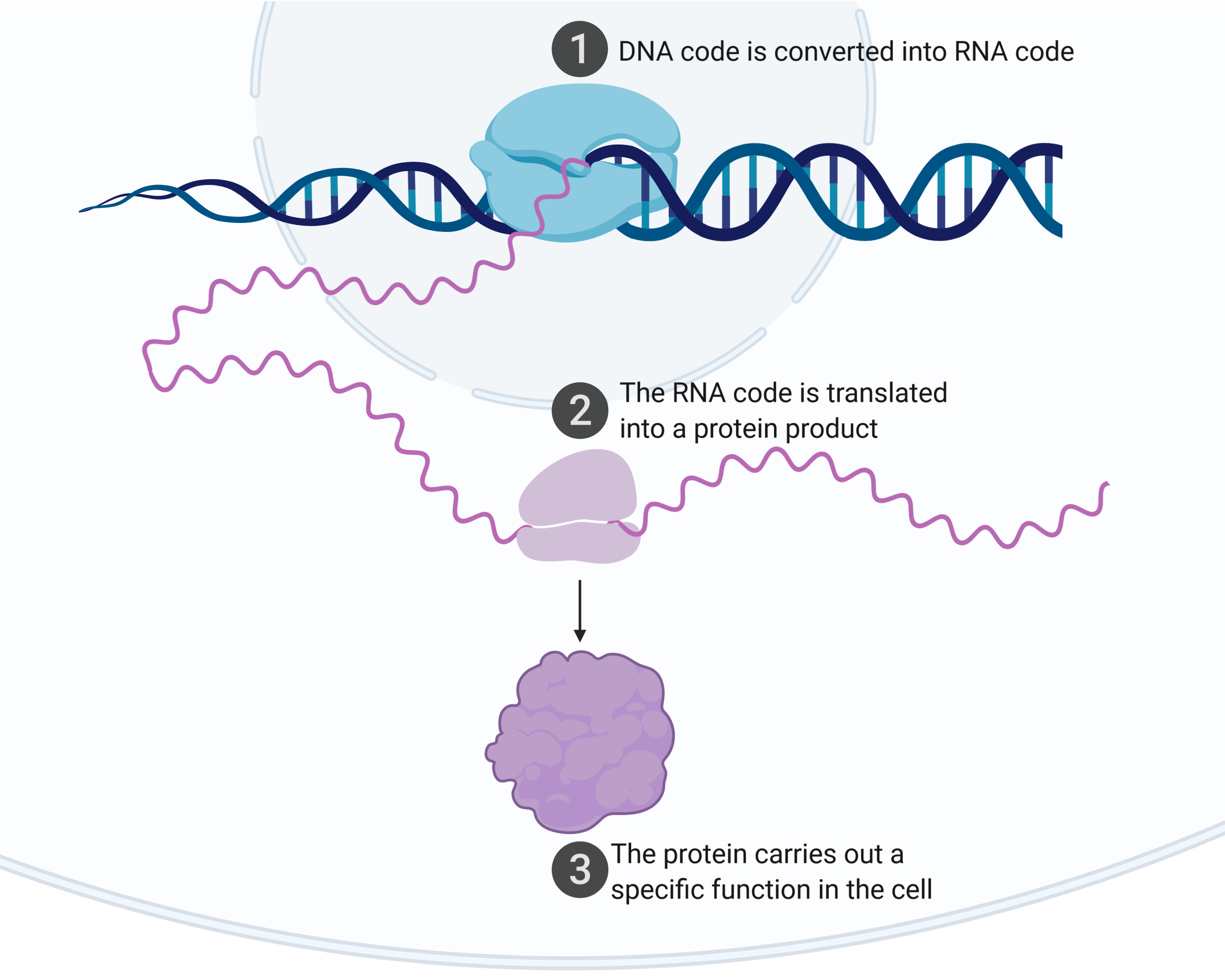
Metabolism
All of the biochemical reactions that occur in an organism. These include reactions that breakdown food molecules and extract their energy, production of cellular components and maintaining existing cells and tissues.
Metabolite
A biochemical that is produced or used in the metabolism of an organism.
Metabolomics
The study of all of the metabolites in an organism, cell or tissue.
Metastasis
Metastatic disease
A disease state in which a patient’s cancer has spread (or metastasized) to another location in the body.
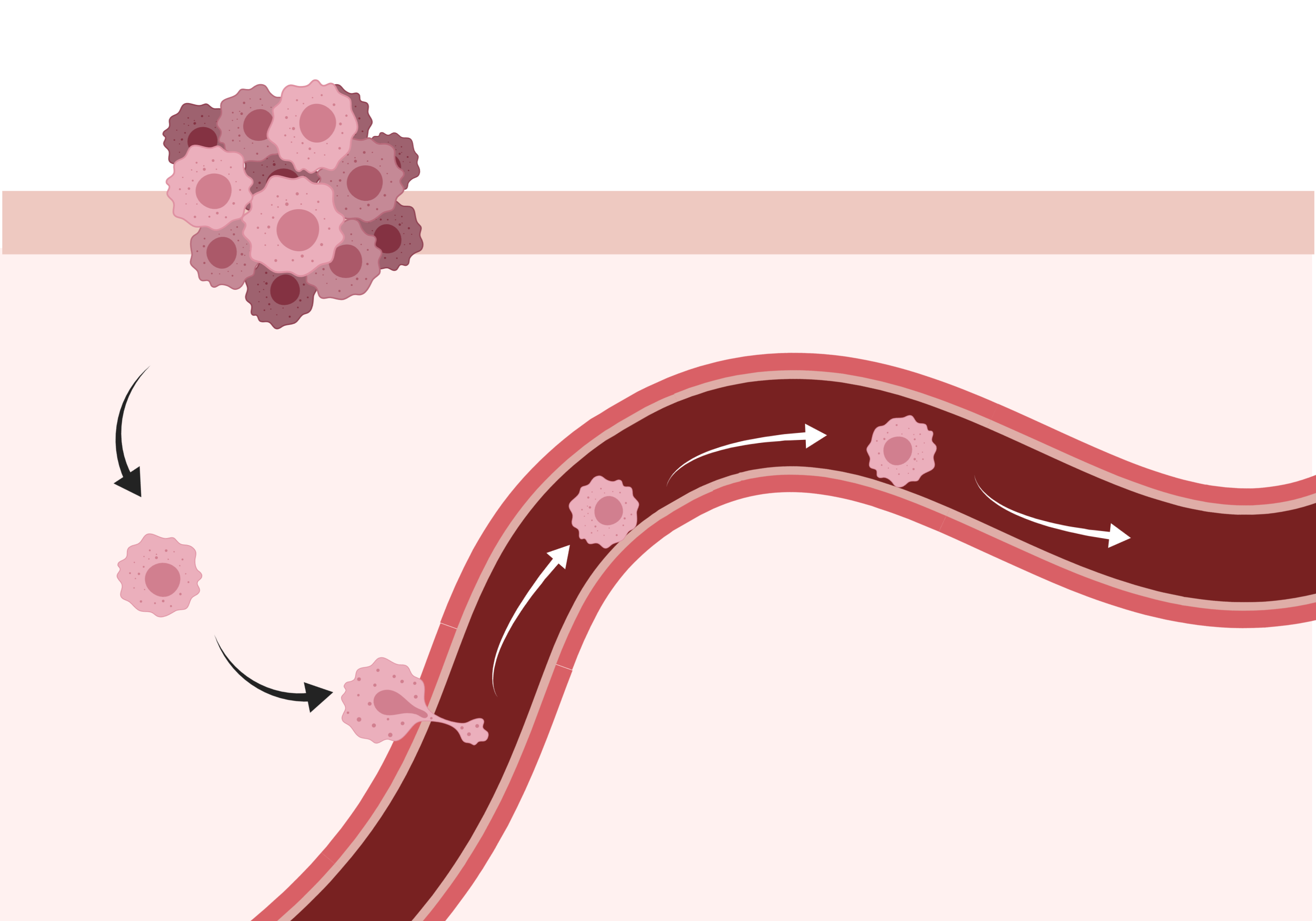
Metatranscriptomics
A branch of science that specifically studies how the microbiome responds to the environment by assessing gene expression
Microorganism
microRNA
A microRNA is a small RNA molecule that functions in RNA silencing and post-transcriptional regulation of gene expression. Micro RNAs function by forming base pairs with complementary sequences within mRNA molecules.
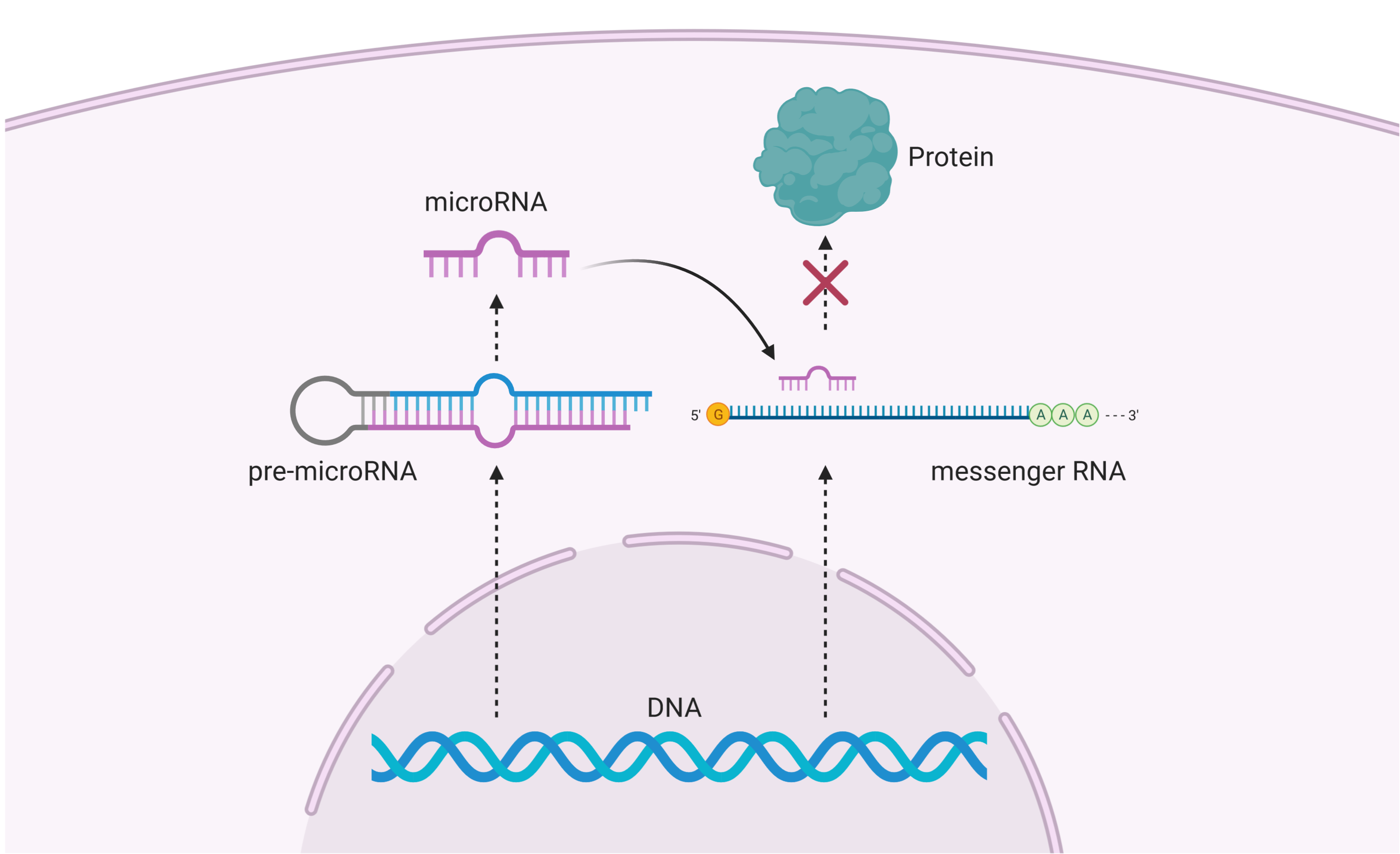
Mitochondria
A mitochondrion (plural mitochondria) is a membrane-bound organelle found in eukaryotic cells. Mitochondria are responsible for extracting energy stored in biomolecules through a process called cellular respiration. The extracted energy is stored in a molecule called ATP which can be used by the cell. Mitochondria contain mitochondrial DNA that encodes for rRNA, tRNA and proteins.
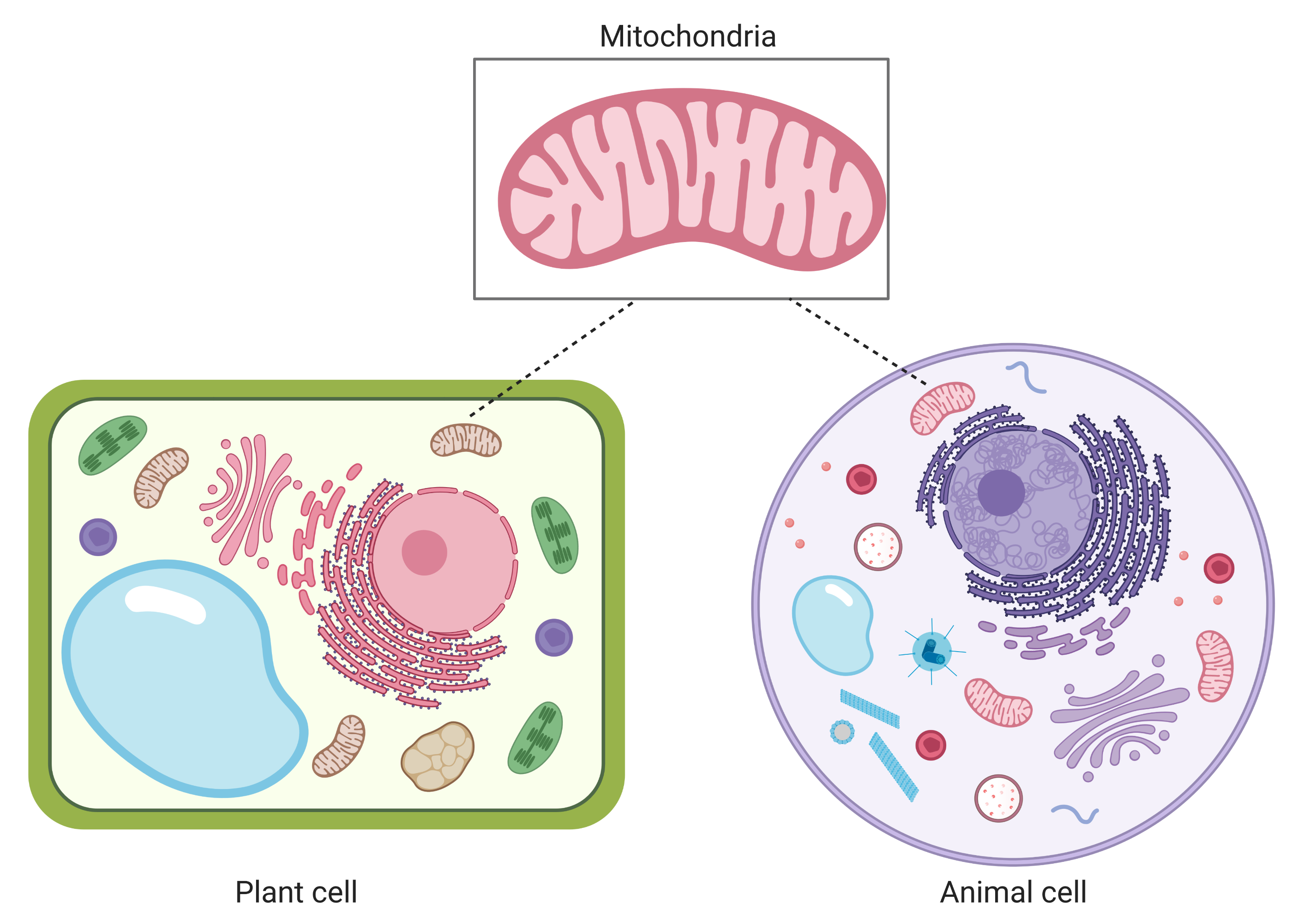
Model organism
Non-human species or animals that are used in the laboratory to help scientists understand biological processes. The expectation is that discoveries made in the model organism can provide insight into the workings of other, more complex organisms. Examples of common model organisms include bacteria (Escherichia coli), yeast (Saccharomyces cerevisiae), and mice (Mus musculus).
Mutation
A change in the DNA sequence or a cell or organism.
Myeloproliferation
The observed phenomenon where the bone marrow produces excessive amounts of normal red blood cells, white blood cells, and platelets.
Myelosuppression
The observed phenomenon where the bone marrow is unable to make enough blood cells. Also referred to as bone marrow suppression, as the bone marrow activity is essentially decreased or “suppressed”.
N
Next generation sequencing (NGS)
DNA sequencing technologies that allow one to sequence multiple smaller fragments in parallel. Examples of NGS include short- and long-read sequencing.
Nucleic acid
Nucleotide
The building blocks of nucleic acids (e.g., DNA and RNA). Nucleotides are composed of three types of molecules: a sugar, a phosphate and a base. The base differs between nucleotides and are called Adenine (A), Thymine (T), Cytosine (C), Guanine (G) and Uracil (U).
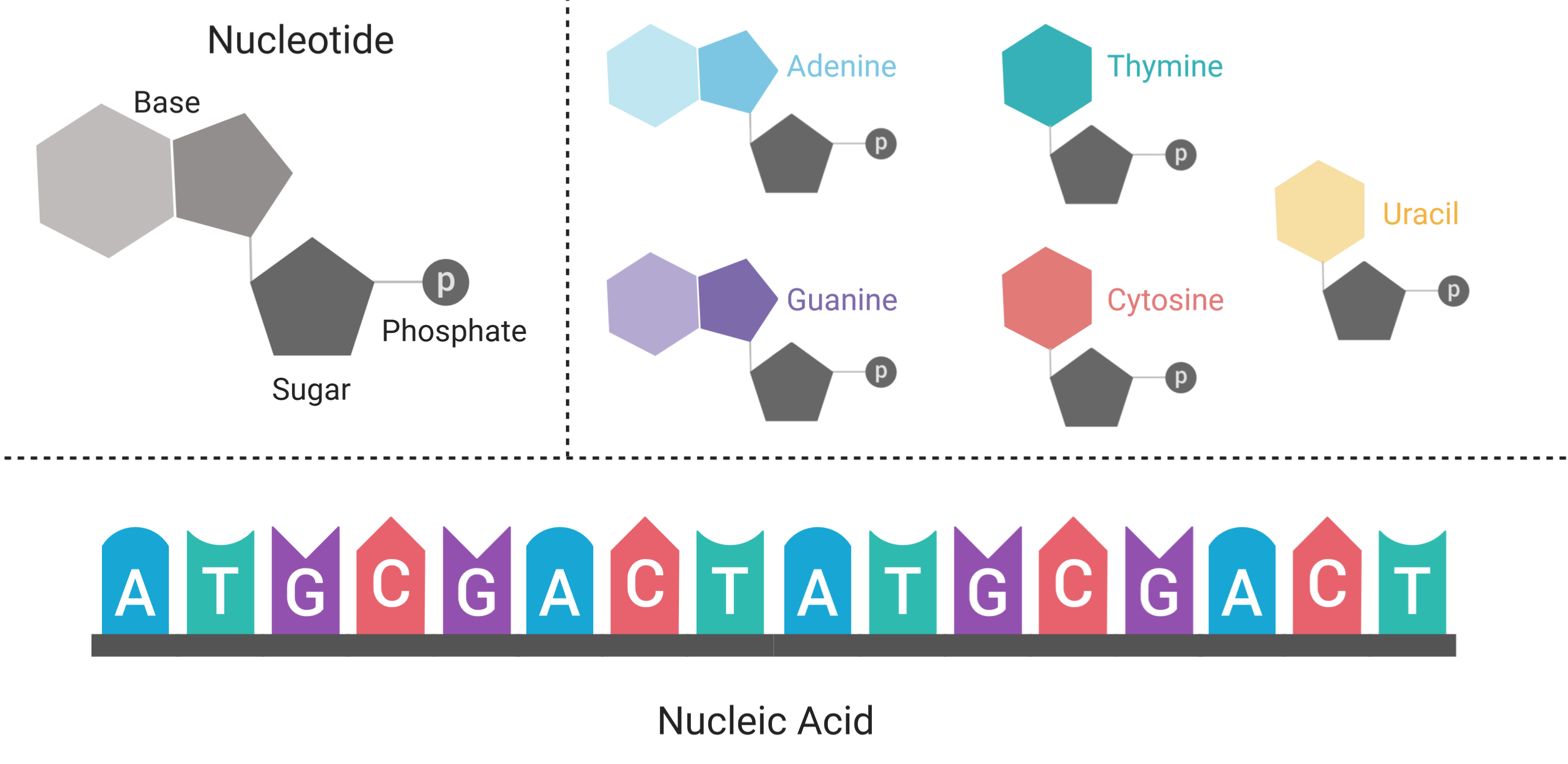
Nucleus
A membrane-bound compartment in a cell containing the genetic material.
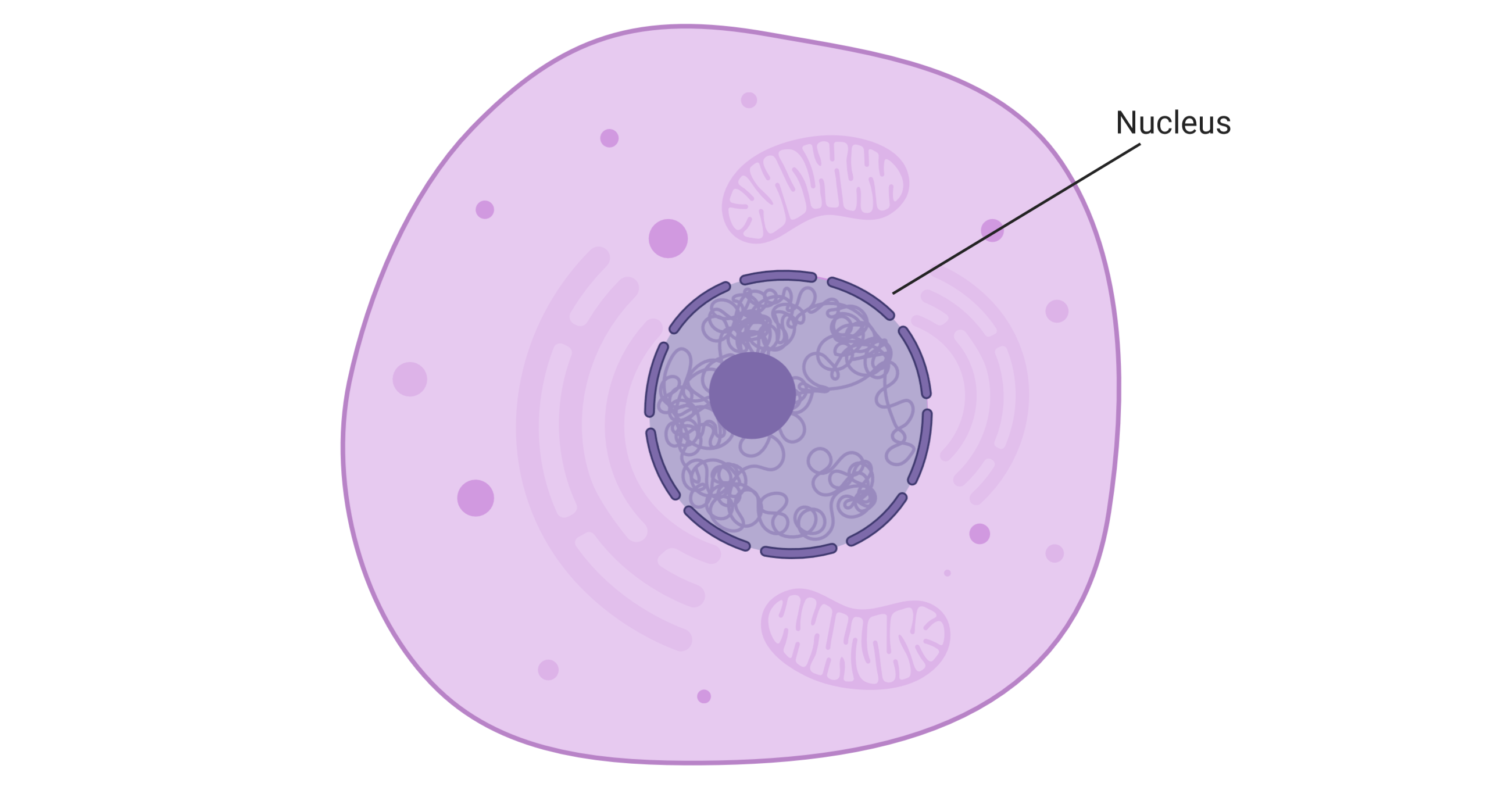
O
Oncogene
Organelle
A specialized subunit or compartment, found within a eukaryotic cell, that carries out a specific function.
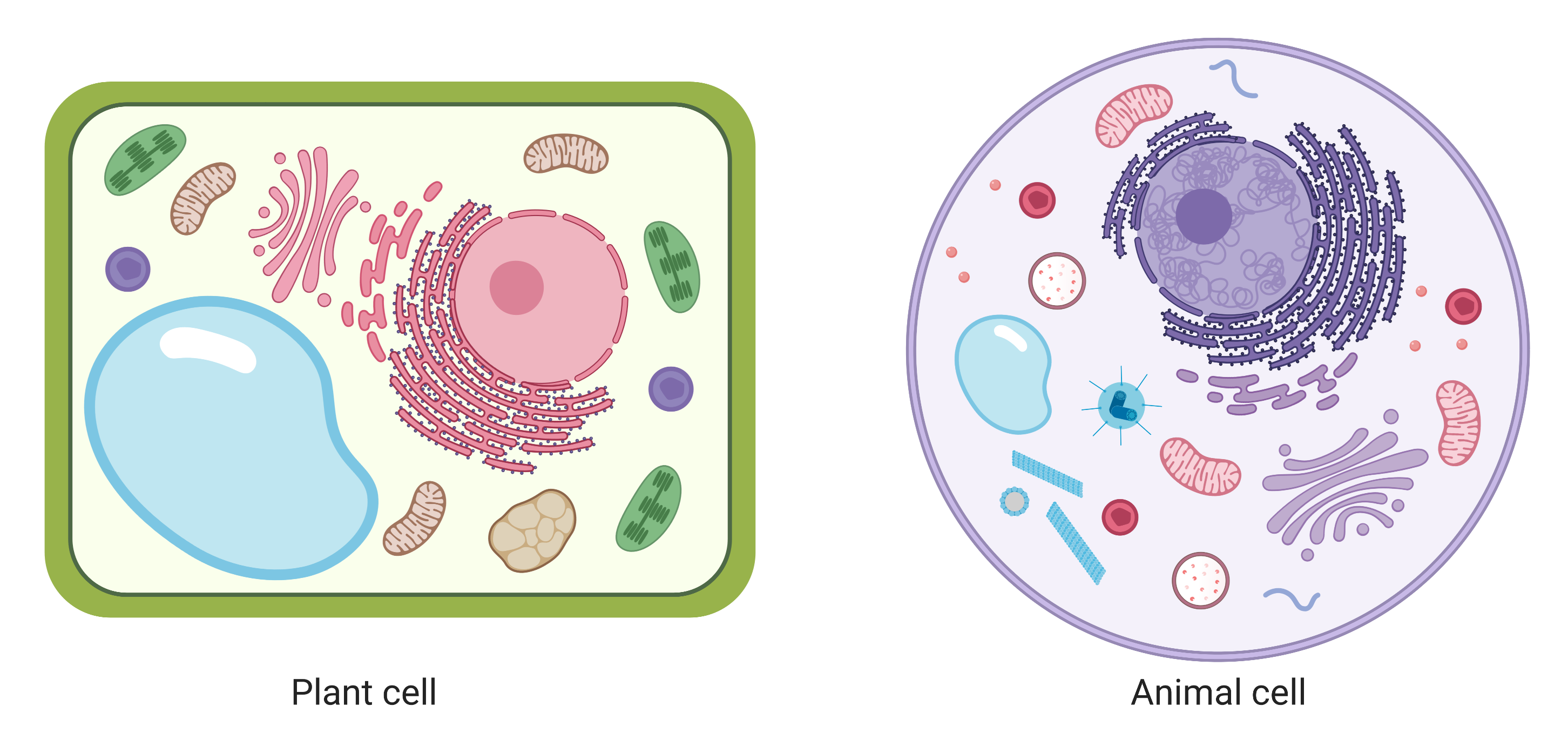
P
Prediction Analysis of Microarray 50 (PAM50)
PAM50 is a list of 50 genes that are assessed in biopsied breast cancer tumour samples. By assessing the expression (i.e., RNA levels) of these 50 genes, breast cancer can be classified as one of five intrinsic subtypes: Luminal A, Luminal B, human epidermal growth factor receptor 2 (HER2)-enriched, Basal-like, and Normal-like. Each of the five molecular subtypes vary by their biological properties and prognoses.
Pathogen
Patient-derived explants (PDEs)
Patient-derived explants (PDEs) are ex vivo cultures of freshly-resected human tumours—including tumour cells and cells from the tumour microenvironment—that preserve histological features of the original, parental tumour.
Penetrance
The proportion of individuals carrying a particular genetic variant who display a particular trait. In cancer genetics, penetrance refers to the likelihood that a disease or condition will occur when a particular genetic variant is present.
Peptide
A short string of amino acids (between 2 to 50 amino acids) linked together by peptide bonds. Peptides are essentially short, biological polymers that, when longer (> 50 amino acids) and properly folded, make up proteins.
Phenotype
The observable characteristics of an individual that result from their genotype.
Point mutation
A genetic mutation in which a single nucleotide is substituted for another.
Poly-A tail
In eukaryotes, the poly-A tail refers to a stretch of adenine nucleic acid bases added to the 3’ end of RNA transcripts destined for translation.
Polymerase Chain Reaction (PCR)
A laboratory procedure that is used to amplify, or replicate, a specific region of DNA to produce many copies.
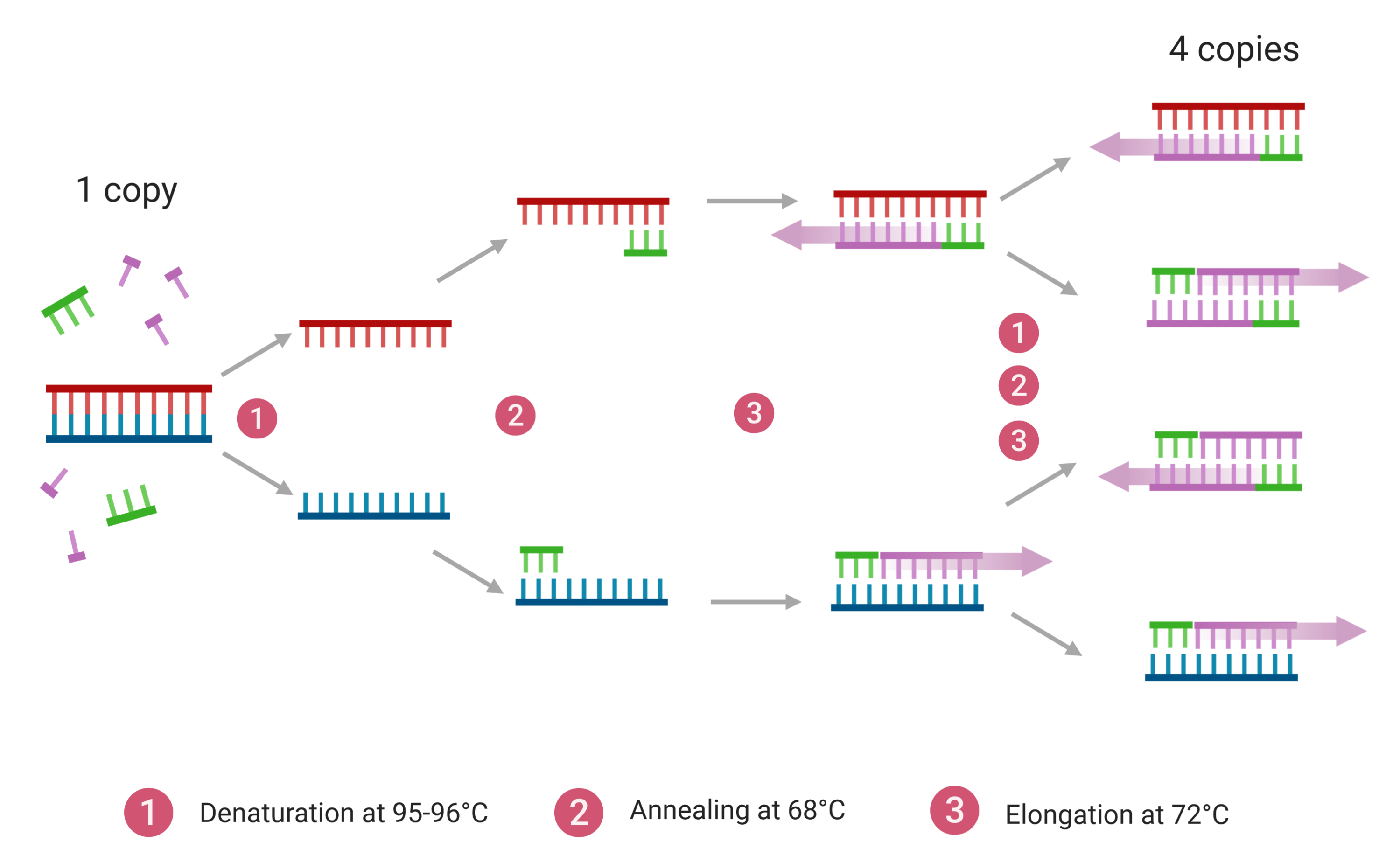
Polymorphism
The presence of genetic variation for a particular gene in a population.
Prokaryote
Promoter
A region of DNA located just before the beginning of a gene. The promoter contains the DNA sequence that is required for the gene to be read (transcribed) and can be modified through epigenetics to regulate gene expression. Mutations in the promoter may cause dysregulation in gene expression and may lead to disease.

Protein
A large biomolecule made up of building blocks called amino acids. Proteins can be structural (e.g., proteins that hold cells in a tissue together) or function (e.g., enzymes).

Proteomics
R
Radiation therapy
A type of cancer therapy that uses beams of intense energy (ionizing radiation) to eliminate cancer cells.
Ribonucleic acid (RNA)
RNA is a nucleic acid. Similar to DNA, it is composed of a long strand of nucleotides. RNA differs from DNA in the chemical structure of the nucleotide building blocks (DNA is made up of deoxyribonucleotides while RNA is made up of ribonucleotides). It also differs in function. While DNA carries the genetic information of the cell, RNA has various functions including production of a protein product through transcription and translation (mRNA), as a structural and functional component of ribosomes (rRNA) and a functional role in translation (tRNA).
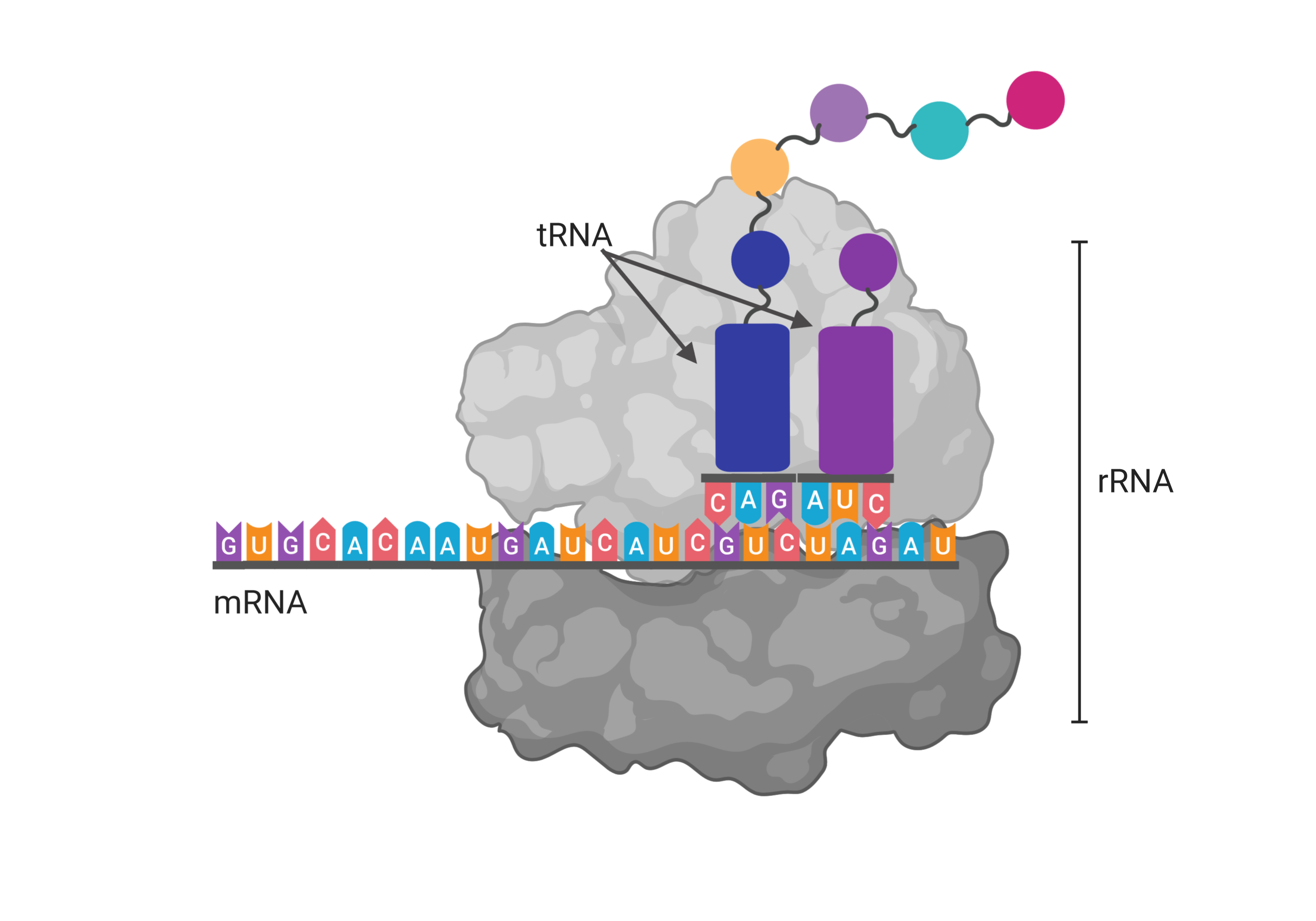
Ribosomal RNA (rRNA)
RNA molecules that, along with ribosomal proteins, make up the structure and function of the ribosome.

Ribosome
A complex of proteins and rRNA that reads the codons of the mRNA and converts them into a chain of amino acids to produce a protein product in a process called translation.
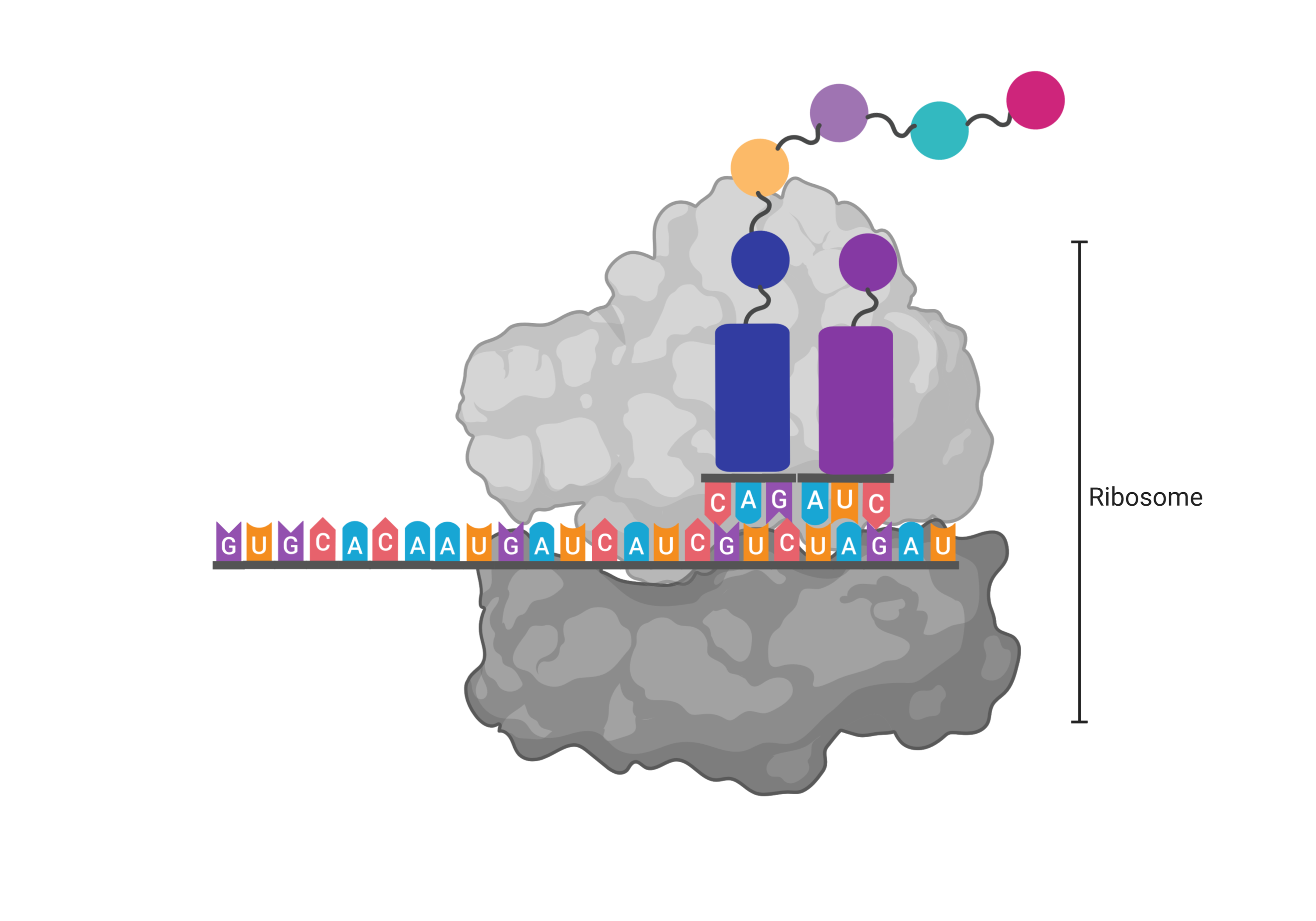
RNA sequencing
The process of determining the order of nucleotides in RNA. It can be used to identify genetic mutations and changes in gene expression.

S
Secretome
The complete set of proteins secreted by cells into the extracellular space.
Short-read sequencing
DNA sequencing approach where DNA is broken into short fragments (75-400 bp) that are amplified then sequenced to produce 'reads'. Reads are then aligned to form a continuous sequence. Short-read sequencing is an example of next generation sequencing (NGS) and is also referred to as second-generation sequencing.
Short Tandem Repeat (STR)
A repeating pattern of adjacent DNA segments 2 to 6 base pairs in length. Also referred to as a microsatellite.
Single Nucleotide Polymorphism (SNP)
A variation in a single base pair within a DNA sequence. SNPs (pronounced “snips”) can be used to determine an individual’s susceptibility to disease or to predict responses to drug treatments.
Single-cell RNA sequencing (scRNA-seq)
A powerful, high-resolution RNA sequencing technique that can provide the transcriptional or expression profiles of thousands of individual cells.
Somatic mutation
Somatic variant calling
The bioinformatics-based approach used to detect or “call” the true, biologically-produced somatic mutations observed in next generation sequencing data.
Stem cell
Cells in the body which can divide and give rise to different populations of cells with specialized functions.
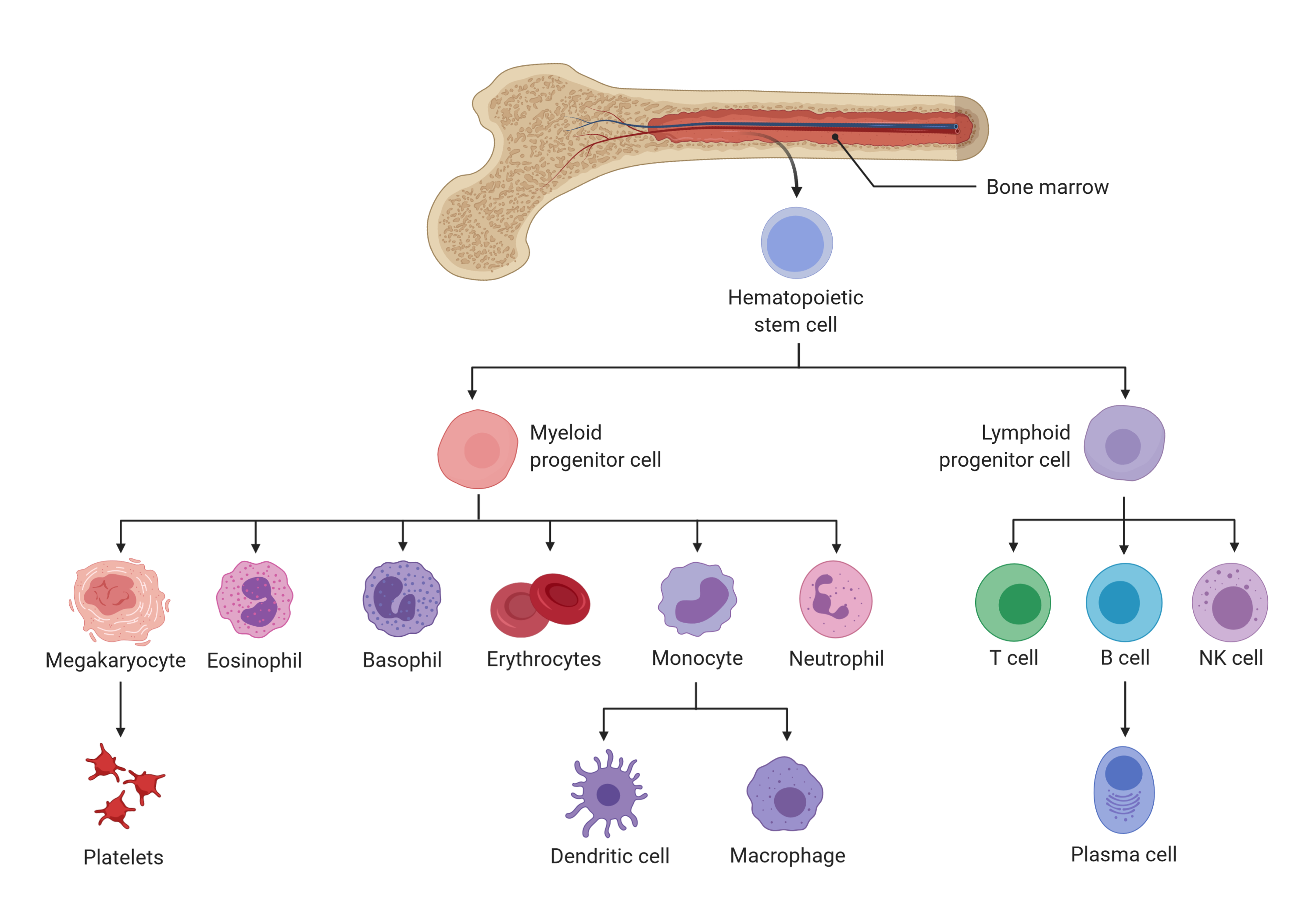
Substrate
An enzyme substrate is the material upon which the enzyme acts to catalyze a chemical reaction.
T
T cell
A type of white blood cell (or leukocyte) that identifies and responds to foreign substances (antigens) as part of the body’s immune system.
Thermal Proteome Profiling (TPP)
Thermal proteome profiling (TPP) is a mass spectrometry-based proteomics technique that relies on the principle that all proteins denature and become insoluble when subjected to heat. TPP exploits the fact that ligand-bound proteins (e.g., proteins bound to a small molecule compound/drug, nucleic acids, or to other proteins) undergo a change in their thermal stability and can be differentiated from the unbound protein.
Transcript
Transcript fusion
Every RNA transcript has a 5' end and a 3' end. Transcript fusion is the combination of two RNA transcripts. This can happen through structural rearrangements, mutations or splicing changes.

Transcript isoforms
Also referred to as “gene isoforms”, transcript isoforms are variations of the RNA species transcribed from the same gene/locus. Transcript isoforms can arise due to alternative transcriptional initiation, alternative splicing, and/or alternative cleavage.
Transcript isoform co-expression
Referring to instances where the expression of two transcript isoforms is correlated directly with one another (e.g., where both transcript isoforms are either highly or lowly expressed across cell categories).
Transcript isoform switching
Isoform switching refers to instances where two isoforms are negatively correlated with one another (e.g. the mutual exclusivity of isoform expression in two or more cell categories; when isoform A expression is high, isoform B expression is low, and vice versa).
Transcription
A biological process in which DNA is read by an enzyme called RNA polymerase, which uses DNA as a template to produce a complimentary RNA molecule.
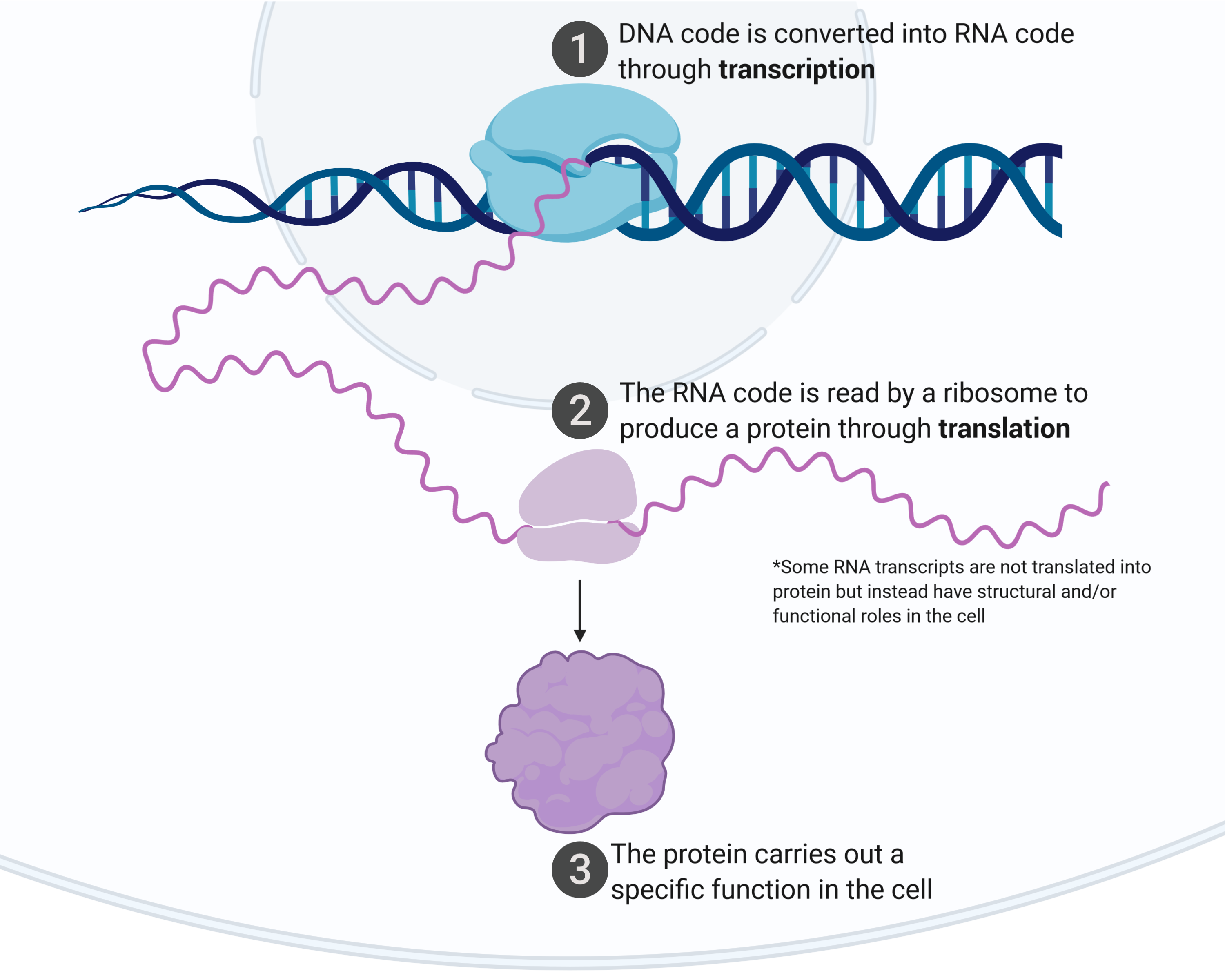
Transcriptome
Collectively, the set of all RNA transcripts, including coding and non-coding, in an individual or a population of cells. Can be used to refer to the global gene expression, also known as RNA or transcript levels, produced in a particular cell or tissue type, or expressed by an organism.
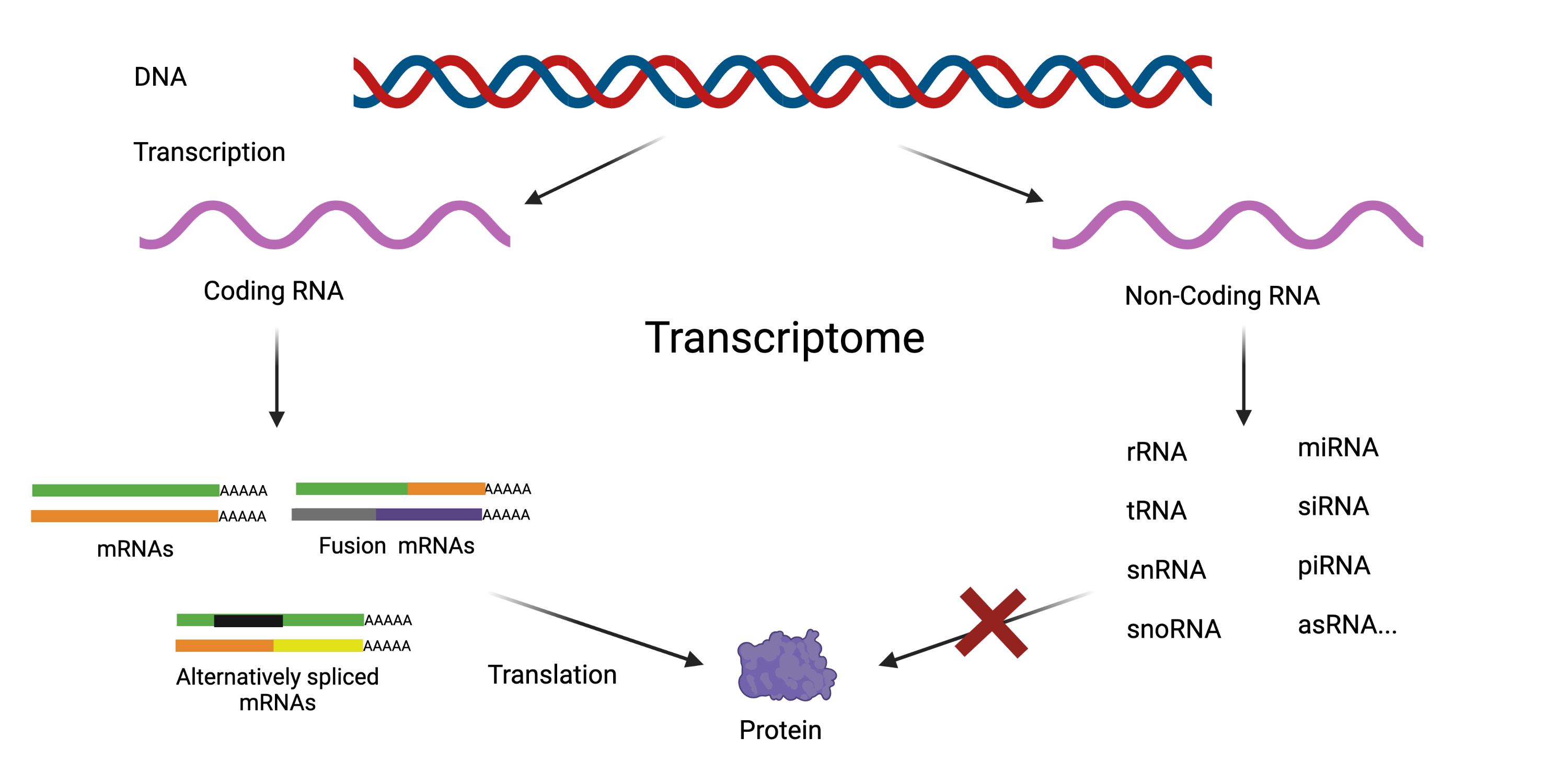
Transcriptomics
The study of the complete set of RNA transcripts in a cell, tissue, organism, or sample. Transcriptomics can be used to record all of the changes in gene expression at a specific moment. Transcriptomics is usually done using a technology called RNA sequencing.
Transfer RNA (tRNA)
RNA molecules that play a functional role in translation. They bring the amino acid building blocks to the ribosome and transfers it to the growing protein chain.

Translation
A biological process in which the mRNA is read by the ribosome in groups of three nucleotides at a time (codons). The ribosome strings together amino acids in the sequence specified by the mRNA code to produce a protein product.

Transposon
A transposon is a DNA sequence that's transcribed into RNA and reverse-transcribed into DNA, and then inserted elsewhere in the genome. Also referred to as a Transposable Element (TE) or jumping gene.
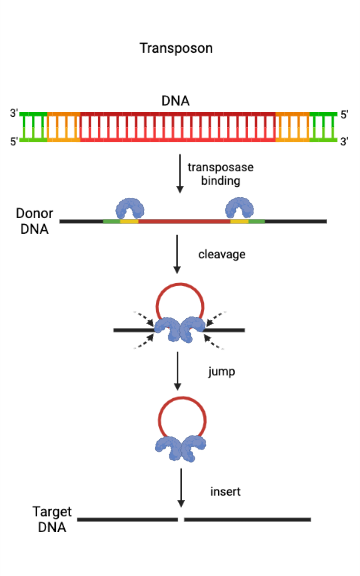
Tumour
An abnormal growth resulting form the proliferation of cells. A tumour may be benign, meaning it is self-limiting and non-invasive, or it may be malignant, meaning it is cancerous. Cancerous tumours proliferate indefinitely, are invasive and can spread through metastasis.
Tumour heterogeneity
Tumour heterogeneity refers to the genetic and phenotypic differences observed in the cells that make up tumour tissue. Heterogeneity means that not every cell in the tumour is genetically or phenotypically identical to one another (intra-tumour heterogeneity) and that every tumour is not identical compared to tumours of the same cancer (inter-tumour heterogeneity).
Tumour suppressor gene
A type of gene that regulates cell division. When mutated, uncontrolled cell proliferation and cancer may occur.
U
Uncompetitive inhibition
Uncompetitive inhibition is a type of enzyme inhibition that occurs when an inhibitor (e.g., small molecule compound/drug, other protein, etc.) binds only to the complex that is formed between an enzyme and its substrate, and prevents the enzyme-substrate complex from functioning properly.
V
Virus
An infectious agent that is unable to replicate independent of a host cell.
W
Whole exome sequencing
Exome sequencing, also known as whole exome sequencing (WES) is a DNA sequencing technique focused on the portion of the genome that codes for proteins, known as the exome. The exome comprises only 1% of the genome.
Whole genome sequencing
DNA sequencing that aims to sequence all of the bases of an individual’s genome, including the exome and non-coding regions.
Whole genome shotgun
A DNA sequencing approach where multiple copies of a genome are randomly fragmented (similar to how a shotgun shell randomly breaks apart into smaller pieces after being fired), sequenced, and then the fragments are reassembled to form a contiguous DNA sequence by using the overlapping regions of the DNA fragments.
Wild-type
The scientific term used when referencing the normal, natural, or unmodified state. In some cases, can refer to the typical form as it occurs in nature.
X
X chromosome
One of the two sex chromosomes in the human genome. Women generally carry two X chromosomes whereas men carry one X chromosome and one Y chromosome.

Y
Y chromosome
One of the two sex chromosomes in the human genome. Women generally do not carry a Y chromosome whereas men carry one X chromosome and one Y chromosome.


